Go! Go! Nippon! ~My First Trip to Japan~
It may have a limited audience, but if you're dreaming of going to Japan then you really can't go wrong with Go! Go! Nippon!

Review Platform:
Developer(s), publisher(s).
- 🇺🇸 MangaGamer
- 🇯🇵 MangaGamer
- 🇪🇺 MangaGamer
Amongst the many differences between games here in the west and those in Japan, none are more pronounced than the differences we see in the visual novel genre. A good portion of English-speaking gamers are not even familiar with the term, yet in Japan, it’s one of the biggest money-makers in the industry. Hundreds of visual novels are released there each year. Go! Go! Nippon!, developed by Japanese company Overdrive with help from MangaGamer, attempts to break down that barrier, or at least poke a hole in it. I was skeptical of the game when I first read about it, but I’m pleased to report that it pleasantly surprised me.
Go! Go! Nippon! is the story of a young man (you can name him) who embarks on his first trip to Japan. He loves Japanese anime and video games, and he has an appreciation for the history and culture of the country. He’s been studying Japanese for years to make the most of his trip and even managed to organise a home-stay with two guys he met on the internet. The internet, as I think we all know by now, often leads to miscommunication. As it turns out, the two ‘male’ friends are actually a pair of sisters! Not only that, but their parents are away, and it’ll just be the two girls and our hero living alone! The two sisters, Makoto and Akira, accompany him on his adventure and act as tour guides so that he can soak up every last bit of Japan.
That completely unrealistic plot aside, Go! Go! Nippon! is in essence a glorified travel guide. Like any visual novel, there are choices to be made and a couple of different endings, but the main point of the game is to show you around some of the biggest tourist attractions in Japan. This includes locations in Tokyo such as Ginza, Asakusa, Akihabara, Ikebukuro, Shibuya, and Shinjuku along with Kiyomizu-dera and Kinjaku-ji in Kyoto. If you have no idea what any of those places are, then you’re not within the target audience. However, that’s not to say you wouldn’t enjoy playing it. You only have one week in Japan, and you’ll visit Kyoto every time, so there are three locations to visit per game while you’re in Tokyo. The girl you end up with and what special location you get a tour of on your last day is ultimately determined by these choices. In short, you’ll need to play through it twice if you want to see everything. Considering that your first go through will only take around five hours, it’s not much of a task to complete it twice. That being said, the game is priced at a measly 9.99 Euros so you’re getting what you pay for.
As I have personally been to almost every location you visit in the game, I’m happy to report that they’re portrayed with extreme accuracy. Your visit to each sightseeing spot is only brief, but you’ll be treated to some lovely scenery, a guide to the interesting tourist spots, and even a little history about the area. I knew little about the history and thoroughly enjoyed learning about how each area developed over time. The backdrop graphics are particularly wonderful to look at, and the images of Asakusa and Tokyo Tower stand out as particularly memorable. If you’ve been to Japan and have already seen these places in detail, then it definitely won’t be as exciting as it would be for a newcomer. Your limited amount of time in each place means that not a lot can be covered, but Overdrive has taken care to throw in just the right amount of culture, history, and pretty scenery to present each area in an attractive and interesting way.
Accompanying this vacation is a cute little love story between the hero and one of his two hosts. This story definitely takes a backseat to the sightseeing, but there’s just enough cute dialogue and funny moments to make you go “Awww.” There are no sad back stories or life-threatening conditions (like many visual novels), just young people getting along, having a good time, and forming relationships. It is a little cringe-worthy at times, but nothing you won’t be familiar with if you’ve played other visual novels. After the credits is a special, and very sweet, epilogue, so make sure to stick around for it! It’s also worth mentioning this is an all-ages release (there is no 18+ version), so don’t expect anything steamy outside of some PG-rated perving.
My only real complaint with the simple story comes from the clichéd dialogue. Aside from the touristy-stuff, almost every line comes from the visual novel writer’s handbook that 90% of Japanese companies seem to use. Makoto plays the older-sister type while Akira easily fits in as a tsundere character. There are lines about indirect kisses, making memories, cheesy moments, and saying things out loud when they were only meant for inside your head. It’s still cute, but if you’re an avid visual novel player, then some of it might bug you a little. On the other hand, if you’re new to the genre, then it’s an excellent entry point. Another issue is that our foreign hero speaks and acts like someone who was born in Japan. Many times he says things or acts in ways most foreigners would not; mostly in his thought processes. It’s not a major issue, but feels a little odd at times.
The dialogue may be overly familiar, but this game isn’t entirely unoriginal – it features some surprisingly unique game mechanics. Alongside all the English text in the game is its Japanese equivalent. If you’re studying the language or already speak it, then it’s a perfect way to practice or brush up. If you wanted to, you could even ignore the English completely and play the whole thing in Japanese. Go! Go! Nippon! even takes time out to teach you some foreign terms. Occasionally, one of the girls will use a word that either the hero is unfamiliar with or that Overdrive assumes you might not know. When this happens, it’s displayed beneath the regular text in a green font along with a proper description. Even if you can’t speak more than a handful of Japanese words, many are likely to be familiar to you if you watch anime (such as tatami, miso, and the like).
The most inspired idea the game makes use of is a little button in the corner of the interface. When clicked, the ‘Show Photo’ button will open your web browser and take you to a Google satellite and street view image of exactly where you are in the game. When you’re out sightseeing you can do this at any time and actually see what the area looks like in real life! I have to commend Overdrive for adding such a clever and appropriate idea. After beating the game you unlock an extras gallery where you can quickly jump to individual sightseeing spots and read all the information again. Also included are the usual CG galleries and scene-skipping, of course.
When the game begins, it first asks you for your name, along with the exchange rate between your country and Japan. Throughout the game it uses your currency to show you how much everything would cost in terms you can understand. If you pause the game, you can check a running tally of how much you’ve spent each day and for the trip in total. This was an excellent idea, but it wasn’t implemented to extent it could have been. When your native currency pops up you’re not always told how much it costs in yen, and it’s useful to know this too, as it’s the currency you’d actually be spending while in Japan. You automatically spend the same amount of money each time you play (depending on where you go), but adding some sort of budgeting scheme would have added some depth to the gameplay.
If you’ve had a look at the screenshots on the right, then it should already be obvious that the game is very attractive to look at. Real locations are drawn beautifully and accurately and are a real delight to examine. Sisters Akira and Makoto are quite stylish too, but they’re certainly not of the quality many high-end visual novels present. The interface is a real stand out with its sleek design, bright colours, and character colour-coded text. Menus are easy to navigate, and there are plenty of options to adjust them if you wish to do so. There’s no voice acting at all, but the characters do well enough without it. The soundtrack is upbeat and catchy and adds excitement and anticipation to every location you visit.
The only real letdown graphically is the reuse of some backgrounds. Nearly every backdrop used in Akira and Makoto’s house and the surrounding area have been recycled from another game Overdrive developed: Kira Kira . If you haven’t played it, then it’s not going to be an issue for you but as I had, it was a little irritating. Likewise, a couple of locations in Kyoto have only been slightly modified for use in Go! Go! Nippon! Luckily, the vast majority of backdrops are original, so it’s not a huge concern. Unfortunately, there are a couple of times where interesting people or objects are described, but not actually shown. A traditionally dressed Geisha our hero sees while in Kyoto, for example, is beautifully described in the text, but there’s no graphic for her. Likewise, if you’re hoping to actually see inside some of the stores at Akihabara, you’ll be sorely disappointed. Another rather unfortunate graphical incident comes by way of a train trip. Each time you take the train you’re presented with a short, very ugly animated sequence in mostly black and gray.
Go! Go! Nippon! nearly perfectly nails what it sets out to do: be a travel guide in the form of a game. It’s fun to play, provides a good overview of some of the popular tourist spots in Japan, and gives you two cute girls as companions. With the ability to see actual photos of where you are in the game at the click of the button, it’s not just an enjoyable game, but a genuinely useful tool. The story is cute and fun and, a few unfortunate exceptions aside, the graphics are beautiful too. It may have a limited audience, but if you’re dreaming of going to Japan, then you really can’t go wrong with Go! Go! Nippon!
Informative overview of popular tourist spots; 'See Photos' button.
Only brief overviews of each location; cringe-worthy dialogue.
Bottom Line
Perfect if you want to visit Japan, but just a bit of fun if you don't.
RPGFan is a gaming website focused on roleplaying games and related genres such as graphic adventures, visual novels, and roguelikes. We cover franchises, creators, fandom, and everything inbetween.

Advertise on this site.
© 2024 Emerald Shield Media LLC | Designed by Valkyrie Studio and MPT Creative.
Privacy Overview
20 Essential Travel Tips for Gamers Going to Japan [Updated]
Planning a trip to the land of the rising fun here are a few helpful pointers..
1) Suica is your friend

2) Konbinis are your friend
3) some atms aren’t your friend, 4) the trains are amazing.

5) The trains are amazing (until around midnight)
6) you don’t have to stay in a hotel.

7) Learning a few basic phrases will take you a long way
8) don’t be afraid to ask for help, 9) find the arcade that’s right for you, 10) akihabara isn’t the only otaku option.

11) Go shopping for retro games and consoles

12) Have data at your fingertips
13) save locations in google maps before you go.

14) If in doubt print it out
15) use the google translate app, 16) let plastic food be your guide.

17) Levels, Jerry, levels
18) book tickets before you go.

19) Don’t stay in Chiba if you’re going to TGS
20) be mindful of cultural differences.

IGN Recommends


- 1.4K Backlogs
- 5.8 % Retired
- Completions

Join for a Better Experience
- Library Management
- Time Tracking Tools
- Multi-Scale Reviews
- Detailed Playthroughs
- Import Steam Times
- Social Features
- And much more!
Main + Sides
Completionist.
Moderate 5.8 % Retirement
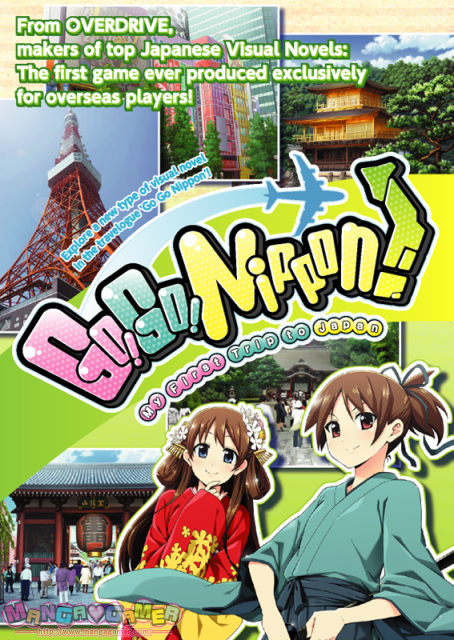
Go! Go! Nippon! ~My First Trip to Japan~
A visual novel from overdrive following a boy on his first visit to japan., summary short summary describing this game..
No recent wiki edits to this page.
Go! Go! Nippon! was developed by Overdrive and released by MangaGamer on September 30th, 2011 as an Original English Language Visual Novel (OELVN) that caters to players outside of Japan.
Our protagonist is a fan of Japanese anime and games. He makes friends with some Japanese people on the internet, and decides to stay with them for a week.
Thrilled by the prospect of a week's sightseeing in Japan, he touches down in the airport, only to discover that his new friends -- " Makoto " and " Akira " -- are actually a pair of attractive young sisters!
After their introductions, the protagonist arrives at their house to learn that no one else is there.
"Um... where are your parents?"
"Our parents were called out of town for two weeks on urgent business."
(In other words, the only ones in the house will be Makoto, Akira, and I?)
(How is that going to work!?)
The local culture has some surprises in store on your first night there, but you'll soon head out on the town! Enjoy the date-like atmosphere as Makoto and Akira take you on a tour of famous sites. You'll marvel at the beauty and history of Japanese culture, fill up on local delicacies, and even share some thrilling moments with the girls!
The week you spend in Japan will certainly be memorable!
Go! Go! Nippon! is designed as a guide to Japan told in a visual novel form with a touch of romance. It takes place over the course of a week. The player can choose the destination for the first 3 days. The 4th and 5th days are spent at Kyoto and the 6th day is determined by the girl who the player is closer to.
The dialogue is displayed in both English and Japanese languages.
System Requirements
Edit image title, embed image, what size image should we insert (this will not affect the original upload), how do you want the image positioned around text, link to giant bomb content.
You can search for any Giant Bomb content.
Link to a page
Insert table, embed tweet.
Enter the URL for the tweet you want to embed.
Pick a List
This edit will also create new pages on Giant Bomb for:
Comment and Save
Until you earn 1000 points all your submissions need to be vetted by other Giant Bomb users. This process takes no more than a few hours and we'll send you an email once approved.
Thanks, we're checking your submission.
Use your keyboard!
Log in to comment
8 Japanese Video Games That Will Instantly Teleport You To Japan
Japanese video games set in Japan
With the pandemic continuing to disrupt air travel, it’s gotten harder and harder to scratch that travel itch. But fear not as there’s still a way to explore Japan thanks to the help of Japanese video games.
Japanese video game developers tend to pay incredible attention to detail, which means that their games set in Japan pretty much offer a virtual tour through the city as you play.
Walk through the bustling streets of Shibuya, fight your way through Osaka, or just attend a Japanese high school – here are 8 Japanese video games to instantly teleport you to Japan.
1. The World Ends With You (DS, Switch, iOS, Android)

The game, which sees a fully explorable 2D stylised recreation of Shibuya, features a unique touch-based battle system that gets your heart pumping as you frantically drag, slash, and tap on the screen. A unique RPG that is unlike anything else even 10 years after its release, The World Ends With You blends compelling gameplay, visuals, music, and story into a single game.
Price: USD49.99 (Switch), USD17.99 (iOS, Android) Compatibility: Nintendo DS, Nintendo Switch, iOS & Android Available on: Nintendo eShop (Switch), App Store (iOS), Google Play (Android)
2. Persona 5 Royal (PS4)

Persona 5 Royal gives you the freedom to choose how you want to live your life each day. Featuring stylish designs, catchy music, and free-roaming gameplay, this game is guaranteed to get you hooked onto becoming a phantom thief in no time.
Price: USD59.99 Compatibility: PlayStation 4 Get it from: PlayStation Store (Digital)
3. Persona 4 Golden (PS2, Vita, PC)

As it turns out, an entirely different world lies beyond the television screen. This revelation kick-starts your race against time before the next victim gets killed. Similar to Persona 5 Royal , Persona 4 Golden also features its own in-game calendar, giving you the freedom to choose what you want to do each day.
Persona 4 Golden ’s whodunnit story will keep you on the edge of your seat, wondering what will happen next.
Price: USD19.99 (PC) Compatibility: PlayStation 2, PlayStation Vita, & PC Get it from: Steam (PC)
4. Yakuza 0 (PS4, XB1, PC)
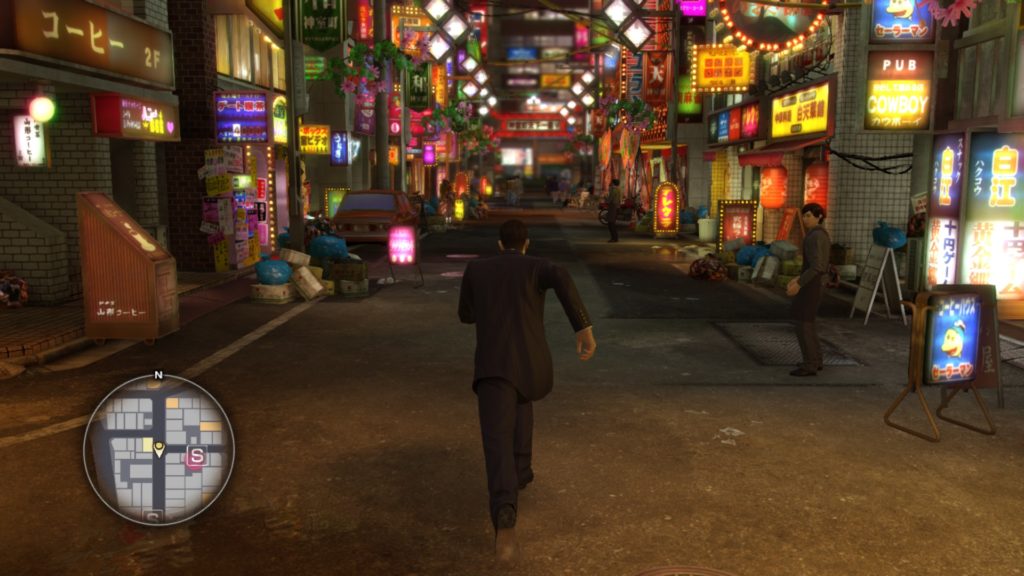
Imagine this: you’re framed for a murder you didn’t commit and you soon find yourself at the end of your rope. Even your yakuza family has turned their backs on you. How will you get yourself out of this mess?
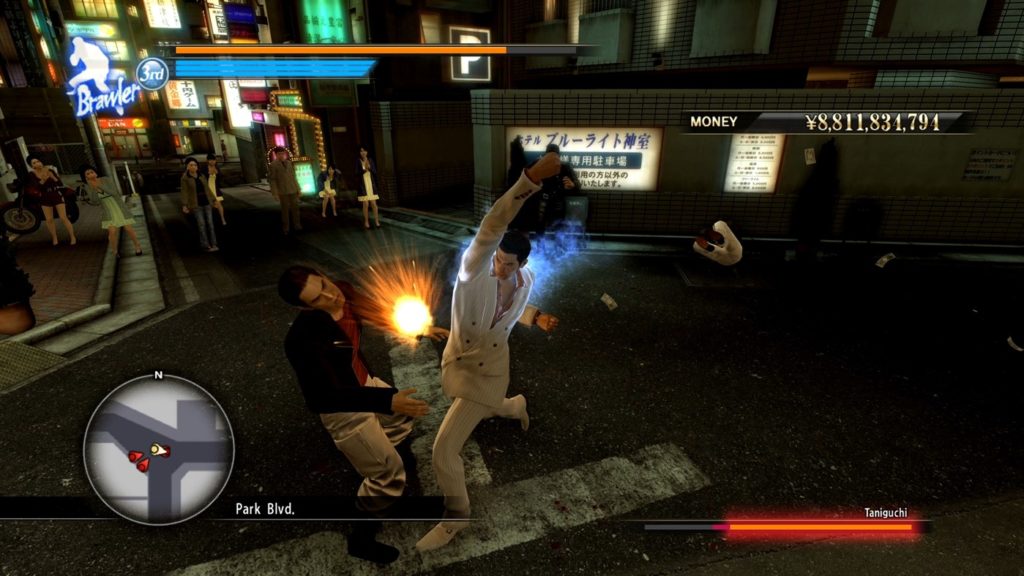
Yakuza 0 plays out as a crime drama at the height of Japan’s bubble economy in the 1980s. The game allows you to explore the bustling districts of Dōtonbori in Osaka and Kabukicho in Tokyo.
What sets Yakuza 0 apart from other RPGs is its rich world filled with zany lovable characters. There are also plenty of mini-games, ranging from karaoke to racing Tamiya cars.
If you liked Yakuza 0 , consider checking out Yakuza Kiwami and Yakuza Kiwami 2 . These 2 games are remakes of the first 2 instalments of the series. Both titles feature updated graphics and improved gameplay.
Price: USD19.99 Compatibility: PlayStation 4, Xbox One, & PC Get it from: PlayStation Store (PS4), Microsoft Store (XB1), Steam (PC)
5. Yakuza Remastered Collection (PS4)
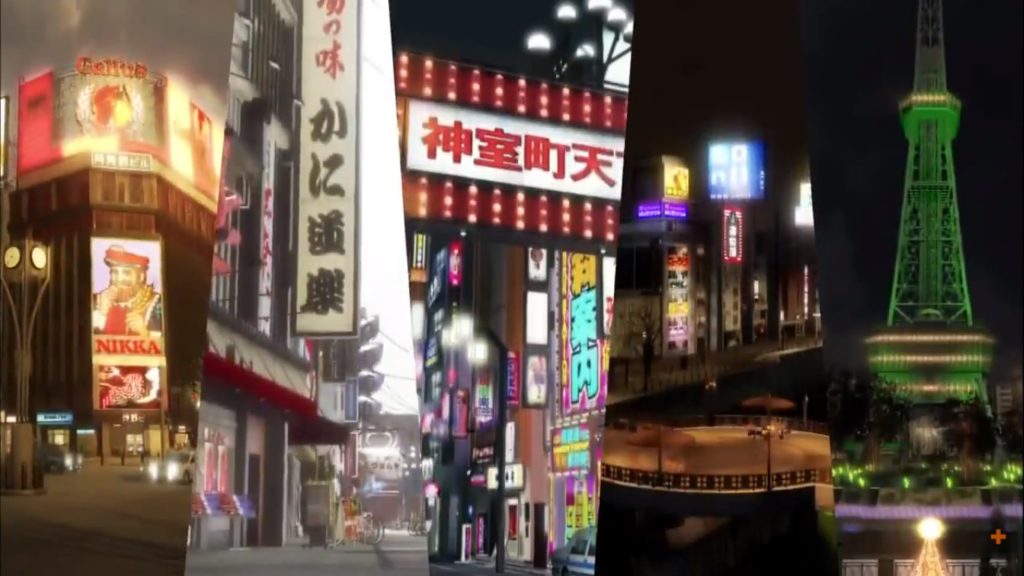
In Yakuza Remastered Collection , you get to experience 3 of the franchise’s signature crime drama games – Yakuza 3, 4, and 5 – with upgraded graphics.
The games are set in the same world as Yakuza 0 . Despite having retired from the yakuza , Kiryu, the protagonist, finds himself at the centre of one debacle after another.

Shenmue was the most expensive game ever developed back in 1999. It’s seen as the pioneer of open-world games. The game has its own in-game clock, and the characters, buses, and shops all operate on their own schedules as they would in-real life.
While the game moves at a much slower pace compared to its modern counterparts, it’s a classic game that bears testament to how far the genre has come.
Price: USD29.99 Compatibility: PlayStation 4, Xbox One, & PC Get it from: PlayStation Store (PS4), Microsoft Store (XB1), Steam (PC)
7. Tokyo Mirage Sessions #FE Encore (Wii U, Switch)
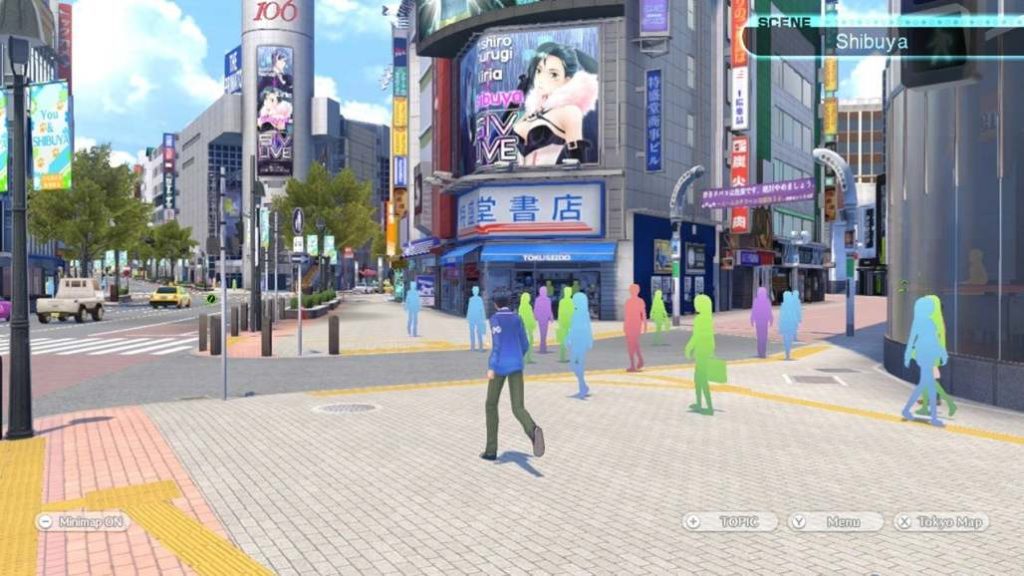
Tokyo Mirage Sessions #FE Encore features real-life locations such as Shibuya and Harajuku, as well as a neon colour palette and peppy BGM. Players are thrust into the world of Mirages – other-worldly beings attracted to the creative energy in humans.
Mirages partner up with entertainers, such as idols and actors, and their strength increases based on the creative energy of said partner.
In this game, you take on the role of Itsuki, a boy who reluctantly joins an entertainment company. Defend the world against evil forces who seek to suck the creative energy out of everyone in the entertainment industry.
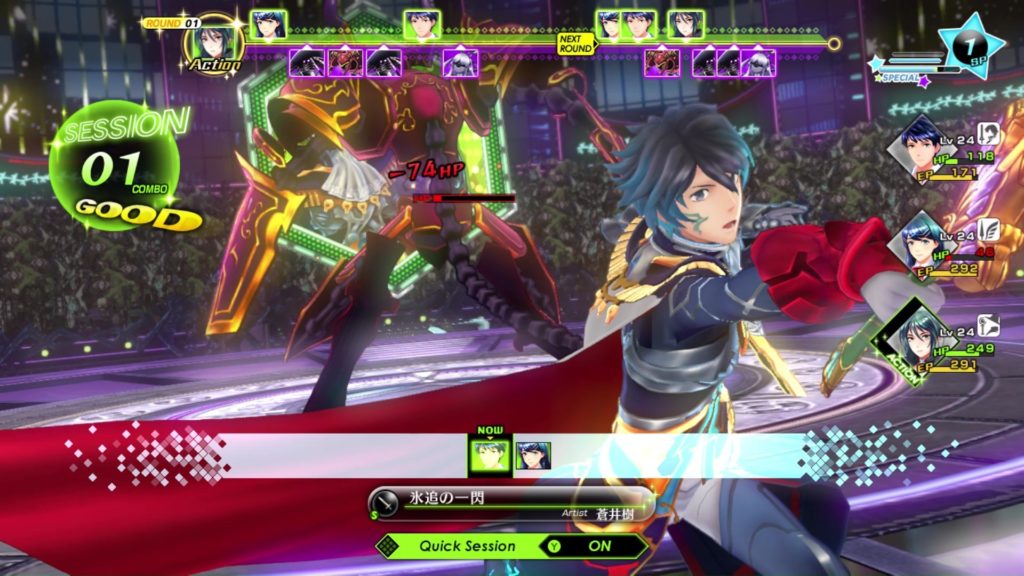
The game is a crossover between the Shin Megami Tensei series and the Fire Emblem series – it features gameplay from the former and characters from the latter. Players advance through the main story as they slowly delve into the character storylines of different entertainers from the same agency.
Price: USD59.99 Compatibility: Nintendo Wii U, Nintendo Switch Get it from: Nintendo eShop (Switch)
8. Digimon Story Cyber Sleuth: Complete Edition (PS4, Vita, Switch, PC)
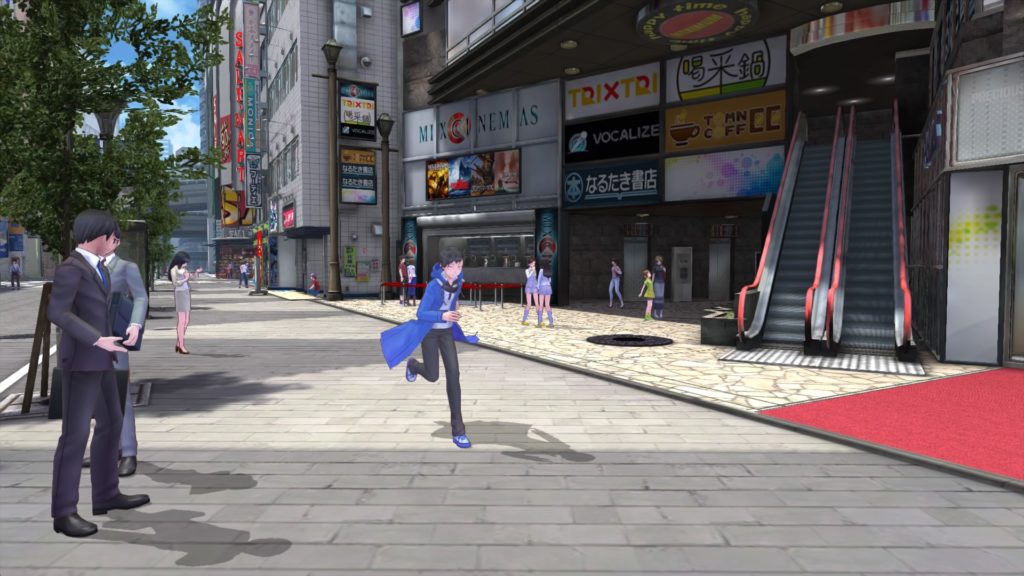
Image credit: Gematsu
EDEN is a cyberspace that has become the centre of social recreation and communication in the world of Digimon Story Cyber Sleuth . Players soon find that there is a seedy side of Eden inhabited by hackers who use Digimon to hack programs and systems.
Strangely enough, these hackers start falling into comas in the real world. As a Cyber Sleuth, you have to attempt to solve the mystery behind the mysterious illnesses.
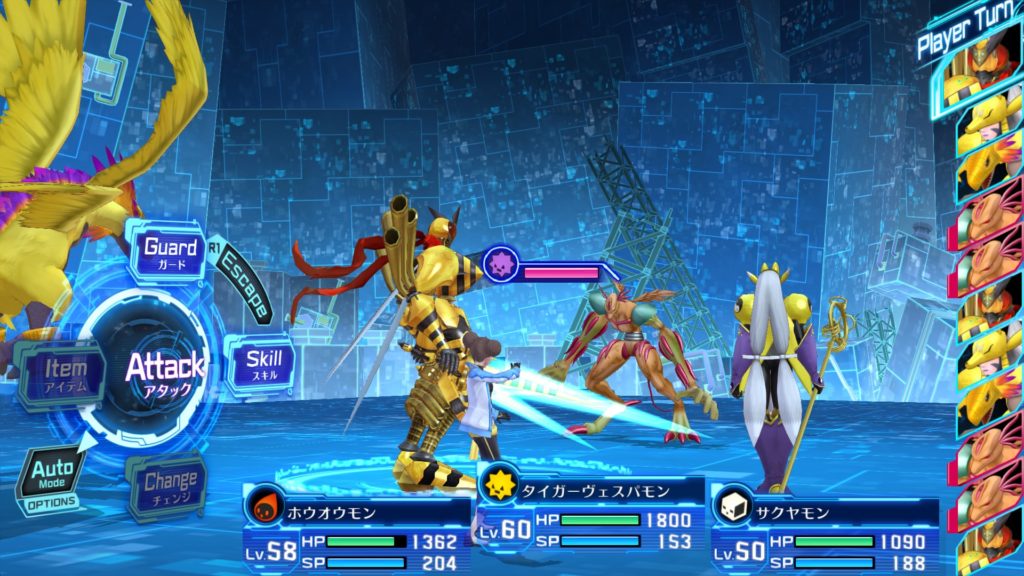
Apart from the anomalies in EDEN, other weird occurrences have also been taking place in the real world. But it’s not all doom and gloom – you get to explore a faithful recreation of Nakano Broadway and go around Tokyo while solving these mysteries.
Digimon Story Cyber Sleuth lets you capture and build your own team of Digimon partners while also raising more on a DigiFarm. Mix and match your team to your liking in order to save the world from the brink of destruction.
Price: USD59.99 (PS4), USD49.99 (Switch, PC) Compatibility: PlayStation 4, Nintendo Switch, & PC Get it from: PlayStation Store (PS4), Nintendo eShop (Switch), Steam (PC)
Japanese video games that let you live vicariously
If you’ve ever been to Japan, the thrill of re-visiting a place through these Japanese video games can add an extra layer of enjoyment to the gameplay. But if you haven’t been to Japan, that’s alright because the in-game locations are so rich in details, they’re almost as good as the real thing.
For more articles, check out these:
- Best otome games
- New anime movies in 2021
- Super Nintendo World in Universal Studios
- Free Tokyo walking tours
- Anime locations IRL
Cover image adapted from: @SEGA_OFFICIAL and @saimika_japan

Get more stories like this.
Drop us your email so you won't miss the latest news.

- International edition
- Australia edition
- Europe edition
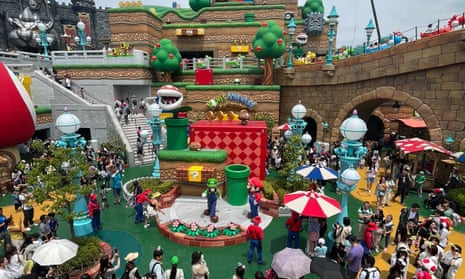
‘A portal to a different world’: a gamer’s guide to visiting Japan
Whether you enter the big green pipe to Super Nintendo World, or want to rummage through rare games in Tokyo’s Electric Town, Japan is a video game paradise
T he experience of travelling in Japan is simultaneously overwhelming and freeing. The world feels bigger out there, gilded by how mainstream video game culture is in comparison with the west. It doesn’t feel like a subculture; it is ordinary. For example, I walked into a FamilyMart for a snack one afternoon, and found a Legend of Zelda: Tears of the Kingdom promotional mushroom tart (which was delicious). The little bright-green payphones along the streets are the very same as those used in the Resident Services in Animal Crossing. Narita Airport even has an entire Nintendo display welcoming jet-lagged passengers fresh off the plane. As a western tourist on a personal pilgrimage, there is so much to find and be surprised by.
Here are some recommendations for fellow video game fans planning to explore Japan:
Akihabara, Tokyo
This district didn’t get the name Electric Town for nothing: it is brimming with video game culture. The skyline is roaring neon – it’s worth visiting at sunset to get the most impact. If you spot some of the maids from the maid cafes on the street waving in punters, don’t take pictures of them; give them a wave and be polite even if you don’t want to dip in to have tea served to you by a girl (or boy) in cat ears.
There are dozens of arcades and shops that sell new and secondhand video games, consoles and merchandise – no matter what you are looking for, be it a Game Boy Micro or a highly specific statuette of a Final Fantasy character, you have a good chance of finding it here. Be prepared to go up plenty of sets of narrow, winding stairs and take your time rummaging.
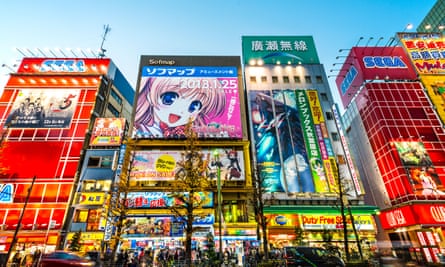
Super Potato is the jewel in Akihabara’s electric crown. Down a narrow corridor and up a tiny elevator, there are floors of games from every era, the beloved and the niche. Though the majority will be in Japanese, some of them region-locked, there is joy to be had browsing what feels like a museum, even if you can’t read kanji. Seeing so many different kinds of video games from throughout time in one place gives a real sense of how far the medium and culture have come. There are stacks of old game guides and magazines to leaf through, displays of merchandise from huge game releases of years gone by: a lifesize statue of Fox McCloud stands proudly at the cash desk. An atmospheric little arcade is on the top floor, too. If you haven’t time to give Akihabara a full afternoon or evening, Super Potato is the place to swing by.
My favourite spot after an evening trawling around is Barfly’s Stomp , a tiny punk bar (and shop) tucked away on a side street. It’s the perfect little bolthole to take the edge off the overstimulation that comes from an hour wandering around towering electronics stores such as BicCamera, or to decompress while you work out how to fit a vintage translucent pink Nintendo 64 in your suitcase.
Alternatives: Jon Doyle, director of specialist video game book publisher Lost in Cult and regular Tokyo visitor, also recommends the hobby shop and game museum Suruga-ya, and the vast book store, Book Off. Guardian games correspondent Keith Stuart suggests the Final Fantasy Eorzea cafe and Monster Hunter bar.
84 Hashi, Tokyo
This is a tiny hidden bar run by Toru Hashimoto, who contributed to some of the most well-known games in Nintendo’s history, including Pokémon Red and Green, Yoshi’s Island, and EarthBound. 84 Hashi has been a drinking spot for Nintendo employees of times gone by, but opens its doors to tourists during limited hours, with customers led by a friendly interpreter. The walls are covered in original illustrations and signatures, and there is a display case with objects in it that made me – a lifelong Nintendo enthusiast – gasp. Booking in advance is essential – the booking fee covers a cocktail, some snacks and a delightful gift. I found the experience priceless.
Nakano Broadway, Tokyo
This dense, elaborately decorated space was built in 1966 as a luxury shopping mall, but is now a 13-storey vintage paradise. There are vintage video game shops, vintage toy shops that seem to contain every obscure 90s toy I ever pined after, crowned in the upper levels by Mandarake, the doorway to which is built out with bright red torii gates, giving it the feel of stepping through a portal into a slightly different world. Among the ephemera and video games, there is also a cosplay store, a fantastic record store, a movie poster store (I secured a Japanese poster of Luc Besson’s Fifth Element, which is now framed on a wall in my home), bookshops and shops full of unboxed gashapon toys, and a bright, busy arcade on the ground floor before you break into the labyrinthine hallways of nostalgia.
Shibuya Parco, Tokyo

The Parco at Shibuya is far more glamorous than any of the other retail experiences I have listed here, and is tucked away off the main drag at Shibuya. The mall contains high luxury fashion concessions, but up on the top floors there is also a Capcom store, a Nintendo store and an elaborate Pokémon centre. These can be very busy but, if you visit midweek or in the morning, you should have your run of the floor. The Nintendo store and the Pokémon Centre have huge statues of beloved characters – a Mewtwo in a tank, sinister with his eyes closed, and a joyous Isabelle welcoming you into a realm of Animal Crossing homeware. Out on the balcony, overlooking the neighbourhood, there is a statue of Mario, pixelated as he was on the NES, jumping out of a pipe. There is something in the presentation of each of these spaces that I find touching: a sense that video games are to be celebrated, rather than hidden away.
Character caf es
While I was wandering around Tokyo Station’s Character Street (a zone in the underground mall full of franchise-oriented shops, including another Pokémon Centre and a Studio Ghibli gift shop), I came across a large queue for the Kirby Café . It is common to see people lining up for snacks and experiences in Tokyo, but this was a line punters couldn’t even join without a reservation. However, the cakes and treats on sale were beautifully and elaborately presented, and there was a limited set of merchandise (Kirby in a chef hat!) for sale. Booking is usually essential at the character cafes that pop up for a few months across Tokyo, which leaves little room for spontaneity. The exception to this rule seems to be the Pokémon Cafe in Sunshine City Mall , which has been open long enough that if you catch it at a quiet hour, you can get a little palm-sized Pikachu-shaped waffle and a latte in a Pokéball-themed cup while you stand surrounded by sculptures of various Pokémon dressed in adorable service outfits.
after newsletter promotion
Character cafes can be found in major cities throughout Japan. It’s worth doing a little research in advance of your trip to see if there are any new character cafe pop-ups in your area of interest, and booking ahead so you don’t end up craning your neck across a line of people to see what kind of Kirby cakes you’re missing out on.
Alternatives: Andy Robinson of gaming news site VGC recommends Star Club in Shinjuku: “a small izakaya themed on the famous plumber”.
Super Nintendo World, Universal Studios, Osaka
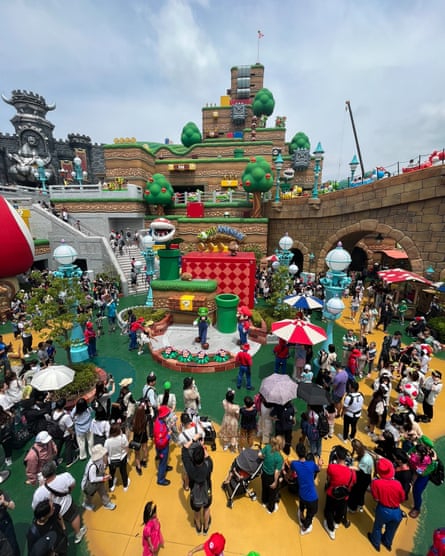
While this was a wonderful experience, I would like to stress how complicated accessing the Super Nintendo World zone of Universal Studios is. Due to the tricky ticketing system, we opted for an old-fashioned access route, arriving at the park at 7am, hoping we would make it into Nintendo World before it hit capacity. This required something of a sprint through the streets of Universal to get through the enormous green pipe and into this vivid rendering of the Mushroom Kingdom. We arrived breathless, but thrilled. Seeing the world once confined to television and Game Boy screens rendered larger than life is almost shocking.
Visitors are urged to buy a wristband that allows them to interact with the sculptures in the park. These allow you to compete via an app for who scored the most “points” – ie interacted with the most objects – every day. The rides are delightful (though the lines are brutal, as expected) and Toad’s cafe was a welcome respite from the heat and crowds, though I am certain we were only able to get a table because we arrived exactly at opening. Our experience was good, but crucially hung together on the fact that we got to see all the things we wanted before the park became completely overwhelmed by people. It’s also very clear that this is an elaborate day trip that may be prohibitively expensive for family groups, at whom it is ostensibly aimed. This trip requires a firm strategy and a budget, and will depend on the individual’s tolerance for theme-park intensity and prices.
Alternatives: While you’re in Osaka, Robinson suggests a trip to Space Station: “It’s a wonderful retro games bar where you can play Nintendo, Sega or modern PC games right on the bar with a delicious cocktail.”
I asked Kyoto-based game developer Liam Edwards of indie studio DenkiWorks to recommend some extra treats in his home town. “ Cafe La Siesta is a gaming-themed cocktail bar, in the heart of Kiyamachi, the drinking area. It’s near Teramachi, so right in the middle of the shopping areas. Game Bar Clantz is another gaming bar that near Teramachi. A-Cho used to be a famous arcade – it has modernised a bit since, but you will find classic cabinets there. As for game stores, A-Too is a famous old video game shop near the golden temple (). Surugaya is a chain, but still pretty top notch for retro game shopping.”
Andy Robinson also recommends Famicom Bar: “It’s a retro-themed drinking hole decorated with colourful classic Nintendo games – and some are available to play.”
- Japan holidays
- Shops and shopping

Oklahoma 13-year-old believed to be first person ever to beat Tetris

Tetris puts me in a state of zen. If only it did the same for my family

Power up: will Chinese financing be the saviour of the Japanese video game industry?

‘I can’t kill a wolf but will happily watch a Sim drown’: murder and morality in video games

‘I played video games with a voracious appetite’: writer Carmen Maria Machado on being a lifelong gamer

Carmen Maria Machado: ‘The cultural baggage around gaming has shifted’

Microsoft completes $69bn deal to buy Call of Duty maker Activision Blizzard

Are video game movies about to take over from Marvel?

Science Weekly Inside the UK’s first gaming disorder clinic – podcast

Shell called out for promoting fossil fuels to youth via Fortnite game
Comments (…), most viewed.

- All Group Tours 2024
- All Group Tours 2025
- Signature Tours (Non-Anime)
- Cherry Blossom Season
- Anime Related Tours
- Search Tours
- Tour by theme
- Cherry Blossom
- Anime / Manga / Game
- Highlights Japan
- Signature Tours
- Festival Tours
- Grand Tours
- Southern Japan
- Hokkaido & Northern Japan Tours
- Quilt Tours
- Snow Monkey
- Japanese Ancestry
- All Private Tours
- Cruise Connection Tours
- Custom Tours
- Last Minute Deal
- Offers & Specials
- Destinations
- Experiences
- Trip Advisor's Must-See
- Brochure Request
- Japan Tour Movies
- Terms & Conditions
- Trip Reviews
- Guest Login
- Tour Airfare
- Airport Transfer
- How to Book
- Travel Tips
Travel Insurance
- Documents Download
- USA/Canada 1-800-285-2726
- Australia (02) 8006 4411

- View Saved Tour
US/Canada Toll Free
1-800-285-2726
- US/Canada Toll Free 1-800-285-2726
- Australia (02)8006 4411
9 Days Golden Route of Japan | Anime & Game Show
- From Kyoto(Osaka) To Tokyo
- Tuesday, November 8, 2022 Updated
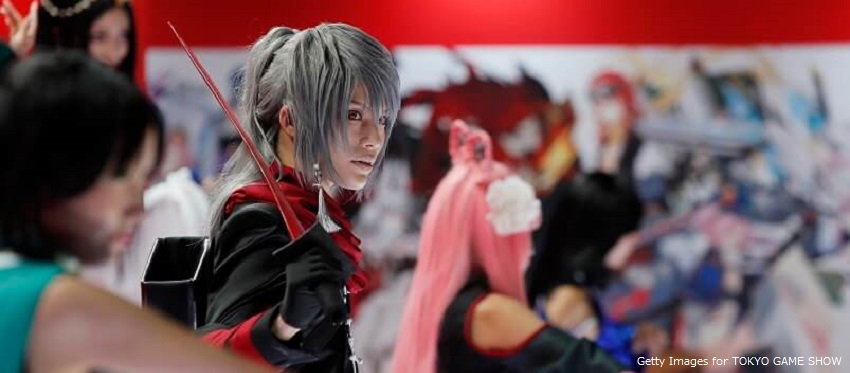
2023 Group Tours
Book Now Special
Enjoy up to $700 off on All 2023 Group Tours
No Promo Code requires

Tour Descriptions
- Dates & Quote
- Accommodations
Tour Departure and Prices 1) Price per person. 2) Airfare is not included.
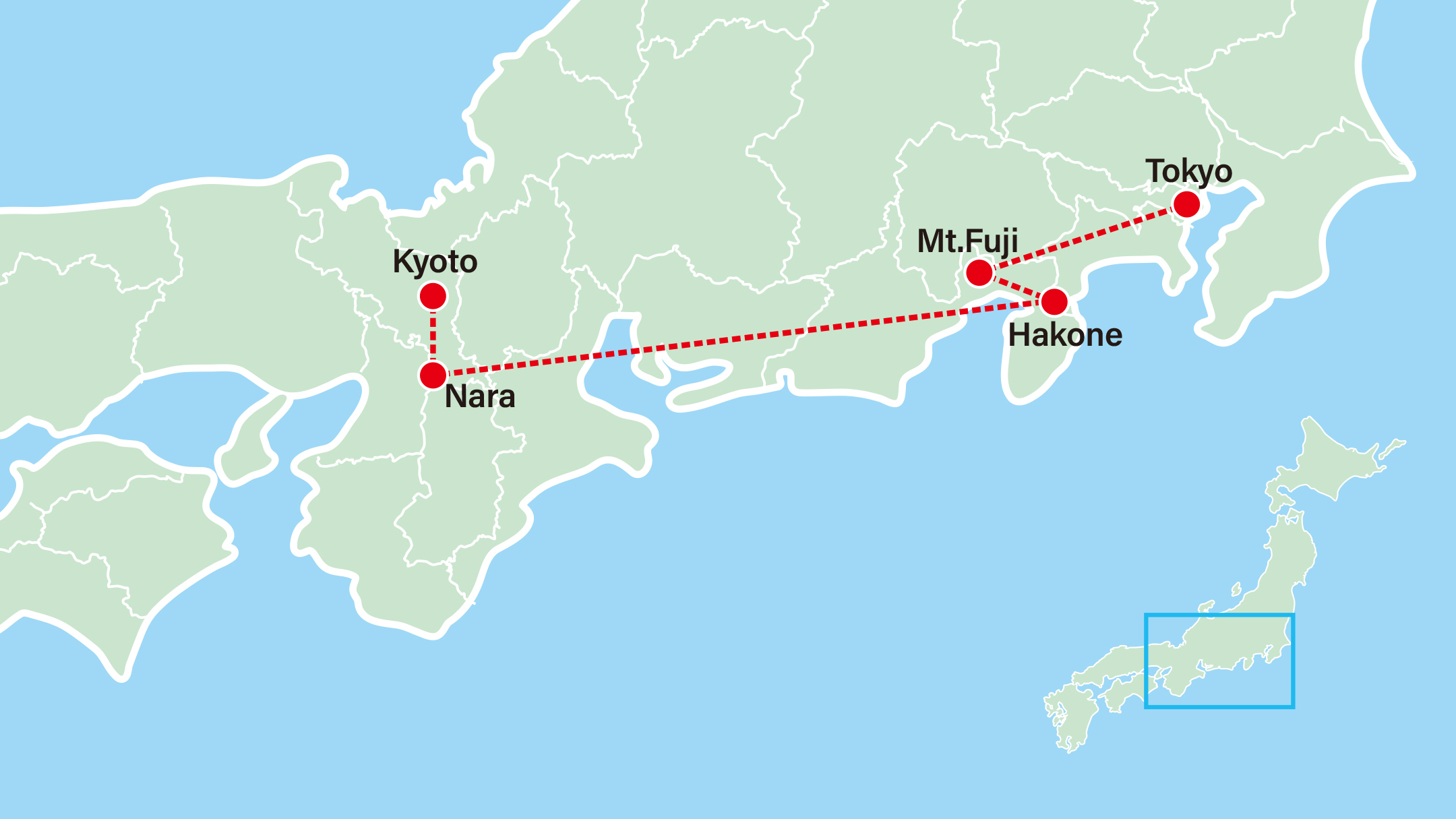
Tour Includes
- - Travel Insurance
- - Optional Excursions
Travel Highlights
Important information, maximum group size.
The maximum number of participants will not exceed 26 people during your Japan tour. Your group may be joined with other tour groups during the tour. Please note that your bus and tour guide may be changed if other groups join the tour.
Single Supplement
Single travelers are required to pay a single supplement in order to guarantee single room accommodation.
We request one suitcase, one carry-on bag, and an overnight bag per person. The tote bag we provide can be used to hold any small merchandise/souvenirs purchased during your tour. When you check out, bring your luggage to the lobby and the bus driver will assist in loading it onto the bus. When you arrive at the next hotel, the bus driver will unload your luggage for you to bring to your room. Please note: The maximum weight of a checked in bag is typically 20 Kilograms or 44 Pounds. You will be traveling with your luggage except during the bullet train ride (if applicable).
Accommodation
All hotel rooms come with a full bathroom and room amenities free of charge unless stated otherwise.
Transportation
All motor coaches come equipped with air-conditioning, plenty of space, comfortable seats, and Wi-Fi.
International Flights
All of our tours begin in either Tokyo or Osaka/Kyoto. When beginning or ending a tour in Tokyo, please book flights to or from Narita International Airport or Haneda International Airport. For tours beginning or ending in Osaka/Kyoto, please book flights to or from Kansai International Airport or Itami Airport. We recommend you do not book your flights until the tour status changes from Book Now to Guaranteed Departure . You can also contact us if you would like for Japan Deluxe Tour's to arrange your flights.
Fitness & Shoes
Traveling and visiting sights in Japan includes a good amount of walking. To fully enjoy the tour, please be prepared to keep up with the pace of the group, climb stairs with no difficulty, and wear comfortable shoes for all day use.
Guests with tattoos may not be able to use the hot-springs or onsens while in Japan. We apologize if you are unable to enjoy this experience during your stay.
Meals & Dietary Requirements
Please notify us before your tour starts if you have any dietary restrictions or requirements we should be aware about. Japan Deluxe Tours can provide Vegetarian meals for guests, and we will do our best to cater to any serious allergies or dietary restrictions. We will not be able to substitute or change meals after your tour begins.
- B :Breakfast
Dining Experience
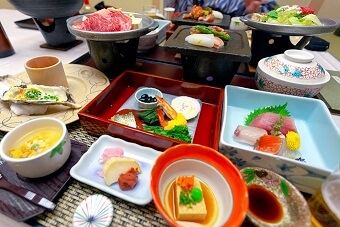
Kaiseki Ryori
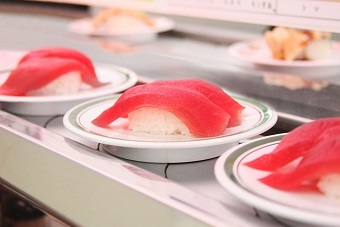
Kaiten Sushi

Teppan-Yaki Lunch
Cultural experience.
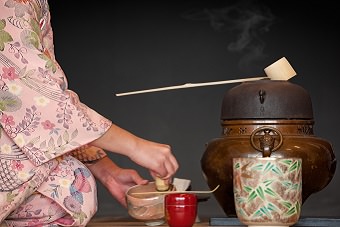
Green Tea Ceremony
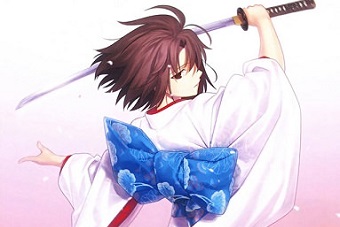
Anime & J-Pop
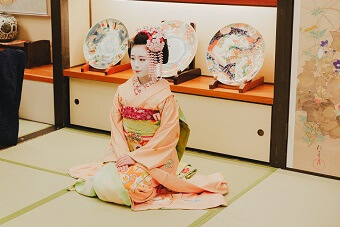
Maiko Dining Experience
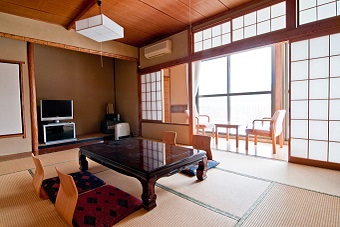
Japanese Style Hotel

Sake Tasting
Riding experience.

Bullet Train
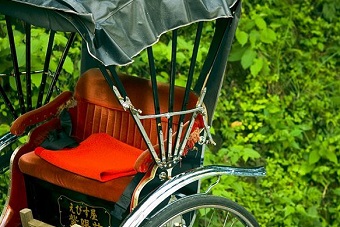
Hakone Ropeway

Tokyo Disneyland or DisneySea 1 Day Tickets & Free Shuttle Arrangement
Discover the Magic Kingdom in Tokyo during your vacation. Add a day trip to either Tokyo Disneyland to discover the Happiest Place on Earth , or set sail for adventure at the nautical-themed Tokyo DisneySea. (*Free shuttle service is only available from Tobu levenat Tokyo Hotel.)

Universal Studio Japan 1 Day Tickets + Bus Arrangement
Discover the spectacular movie theme park in Osaka during your vacation. Add USJ to any of our fully-guided private Japan tour packages or on a custom luxury vacation, or extend your Japan tour in Osaka to visit this lively theme park!

Keep connected to the internet during your tour with a data SIM Card. This only provides wifi connection, not a phone number. ※Please check if your device is compatible with the SIM Card. ※If you live outside the U.S., you cannot select the SIM card.
Customer Reviews
Book with confidence.
All small-group journeys are guaranteed to operate with just 6 guests.
- Detailed Itinerary
Reserve Your Air with Japan Deluxe Tours
Call for preferred rates through our partner.
Protect your investment.
Tour Standard
- All ground transportation
- All admission fees as listed
- Gratuities & Local Taxes
- Round-trip airport transfers
- licensed tour guide throughout
- My Account
- Become a Member
- Recommended
Travel to Japan
You can only play this game with:
Windows 7 Windows 8 Windows 8.1 Windows 10
- Hidden Object
Video & Screenshots
Hit the road and head for the Land of the Rising Sun!
Like to play another game from the Travel To series ?

Travel to India
Prepare yourself for an exciting adventure in the colorful country of India!

Travel to Brazil
Get ready to enjoy the wonders of Brazil!

Travel to Thailand
Pack your bags and get ready to discover the wonders of Thailand!

Travel to Canada
Travel to Canada and discover beautiful cities and landscapes!

Travel to Germany
Find hidden objects with the Hudsons on Christmas adventure in Germany!

Travel to Spain
Get ready to enjoy an exciting Spanish adventure!

Travel to Mexico
Get ready for an exciting adventure set in vibrant Mexico!

Travel to Australia
Explore beautiful beaches and amazing wildlife on an Australian safari!
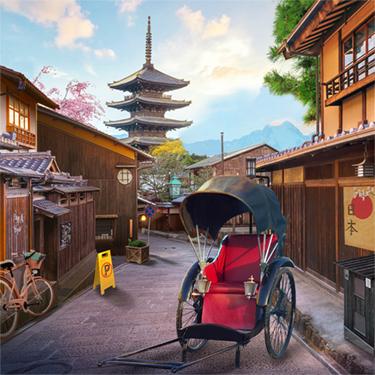
Travel to USA
Embark on a new adventure and travel across the USA!
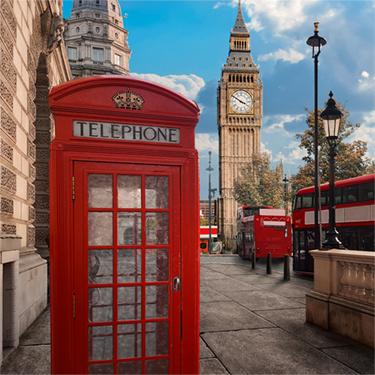
Travel to England
Enjoy the historic sights of England from the comfort of home in a leisurely Hidden Object game.


Travel to France
Travel to France and enjoy the magnifique culture!

Travel to Italy
Take an exciting trip to Italy and discover its hidden beauties.
© Copyright GameHouse 2024
- Terms of Service
- Privacy Policy
- Cookie Policy

- Resource Management
- Time Management
- Login Become a Member
Travel, culture, and stories from Japan.
A complete guide to traditional japanese board games..
8 Traditional board games from Japan.

As an Amazon Associate, I get commissions for purchases made through links in this post. At no extra cost to you! ^_^
I won’t lie, I love a good board game.
In fact, it surprised me when I realized I haven’t yet spoken about Japan’s history with these tabletop marvels.
If you’re planning a trip to Japan and are looking for a few ways to connect with the locals and soak up the culture , try finding an opportunity to play a few classic and traditional board games.
You’re likely to find these opportunities in parks, game parlors, or if you stay with a host family for a few days (Highly recommended).
Board games are, for the most part, a universal language. Especially once you’ve learned how to properly play!
About the list:
Just because these games are classed as traditional Japanese games, doesn’t mean they’re popular. In fact, many of the games on this list did not originate in Japan but have since become extremely popular around their time of discovery.
This is a list of 8 of the most influential and famous traditional Japanese board games throughout the country’s history.
But first, a commonly asked question about traditional Japanese board games:
What is the most popular traditional Japanese board game?
According to Buyee Blog , the most popular traditional board game in Japan Is Shogi. Slightly similar to chess in some ways, Shogi is a timeless board game that’ll undoubtedly stick around for a long time.
However, if we’re talking about the most popular traditional Japanese board game based on my own experiences of visiting Japan then I’d have to say Mahjong. Over the many times I’ve visited the country, Mahjong has been the prevalent board game of pretty much everyone in Japan.
Japanese Mahjong is just as popular outside of Japan, too, with plenty of online variations that let you enjoy what is arguably one of the most interesting solo board games out there. But it is inside its home country that the game has a cult status.
Most Ojiisan (Grandpas) are partial to a game or 20, and whilst it may not be as popular with the younger generation, they don’t tend to play board games all that much anyway.
When I visit my partner’s childhood home in Japan, If I don’t see her grandad smoking in the courtyard you can bet anything you like he’ll be in his room playing Riichi Mahjong!
So to sum up, Shogi is the most popular game according to what I could find on the internet, but Mahjong is the most popular from my own experience.
Are traditional Japanese board games hard to play?
As you read through this article, you’ll likely come across some board games you have heard of and some you haven’t.
Some of those games, like Sudoku, are as simple as they come. But others like Riichi Mahjong may well take a little longer to learn.
Whilst I wouldn’t necessarily suggest all traditional Japanese board games are hard to play, from the first and second-hand research I’ve conducted it seems quite a few of them are very hard to master.
GO, for instance, is a Japanese game you’ll find that’s easy to learn the basics but will take years and years to call yourself a master (if ever).
A final reason you may assume that traditional Japanese games are hard to play is because of the language barrier. The Japanese language is formed of three separate alphabets, making it an intimidating language at best.
The truth is, few of these games actually require you to know any Japanese. And even in those cases, there are English versions, so you can be sure you won’t miss out on any of the fun!
1. Shogi – Japanese Chess / Game of generals
2. japanese mahjong (riichi mahjong), 4. gomoku – a japanese variation of go, 5. sudoku – the game you all know, 6. daifugō – the grand millionaire, 7. karuta – the japanese poem game, 8. sugoroku – the japanese propaganda machine.
Table of Contents
Number of players: 2
Average game time: Up to 2 hours
Fun fact: The longest known game of Shogi was 538 moves long between Piket and Lautier
How do you play Shogi?
Basic rules:
As with a lot of the games on this list, Shogi is rather complex to sum up in a few brief sentences.
But I’ll do my best!
Players start with 20 pieces with the main aim of the game being to capture or kill an opposing teams king.
Each piece on the board can only move in a specific way. (A lot like regular chess)
The players take turns moving their pieces and attempt to place the king in a position where he cannot escape. (Again, much like the regular variant of chess)
Where Japanese chess, or Shogi, differs from the chess that you or I may be more familiar with is that pieces can be captured and turned into an ally to accompany you on your quest for victory.
Though the western version of chess and Shogi do share a few similarities, it’s this espionage ‘esque’ element that truly sets the games apart.
I’m yet to play Shogi, but after figuring out the rules it’s definitely on my to-do list!
Incase my rules aren’t in-depth enough for you (or lets be honest, if I’ve totally butchered them) then you should take a look here for the written rules or underneath for a video explanation.
Commonly asked questions about Shogi:
Is shogi harder than chess.
To learn the basic rules of it? Probably not.
But to master? Technically, yes.
To put this into perspective, a Shogi professional told the New York Times in 1999 that chess has around 10^120 moves whereas chess has 10^220 moves.
That’s the number 10 followed by either 120 or 220 zeros depending on the game. So whilst chess is clearly a tough game to master, Shogi takes it one step further.
A final way Japanese chess could be deemed harder than regular chess is that pieces can swap side which might make for a pretty confusing end game.
But if you ask me, that’s all part of the fun.
Is Shogi older than chess?
Unfortunately this isn’t such a simple question to answer.
Records state that chess is the older of the two, but not it’s current form.
It wasn’t until around the 15th century that both games become the recognisable versions we see today.
Where can I buy Shogi?
You can grab a simple Shogi board from amazon here !
Number of players: 3-4 (Though can be fewer with slight game variations)
Fun fact: After more research, it turns out there is a factual backing to my original assumption about Mahjong being the most popular game in Japan. As of 2008, there were around 7.6 million Mahjong players in Japan with another 8,900 mahjong parlors to satisfy their cravings. In the same year, these parlors did over ¥300 billion in sales. Then in 2010, it became the most popular board game (or table game) in the country according to Metropolis , a monthly Japanese newspaper and guide.
About Japanese Mahjong
Japanese Mahjong is a variation of the original Mahjong that was first brought over in 1924.
It was at this time that a soldier named Saburo Hirayama introduced Japan to the game of mahjong by starting a club, parlor, and school.
To make the game open to the most amount of people, a few of the Chinese rules were removed and as time went on, a new set of Japanese rules were added to further develop the game.
This formed the basis of what we now know as Riichi Mahjong. (Japanese mahjong)
How do you play Japanese Mahjong?
The answer to this question is extremely specific to the variation you’re playing. As such, we’ll stick to the basic version of Japanese Mahjong. (A variation in itself from standard mahjong)
As I may not do justice to the game, it’s best you hear the instructions from someone with a little more knowledge.
Maybe one day soon I’ll be able to eloquently write out my own set of rules, but that day is not today!
Though it might be a little tricky to pick up at first, I urge you to stick with it!
Take a look at The Cool Old Games explanation if you’d prefer not to watch a video.
Commonly asked questions about Mahjong:
Is mahjong hard to learn.
I downloaded a simple variation of Mahjong onto my Nintendo switch in the hope to play it during journeys or just before I fell asleep.
Immediately, I was bombarded with thousands (that might be an exaggeration on my part, but you get the idea…) of unending rules about how to play the game.
Now whilst I don’t entirely blame the traditional game of Mahjong for what was probably the video game’s fault, it still didn’t seem like an easy game to get into.
Bear in mind, that’s all the experience I have with properly trying to learn the game. If you were to get taught by a competent player or learn from another source then I’m sure you’d be absolutely fine with a little patience.
Is Mahjong harder to win than chess?
Let’s compare it to chess. Just like most of the games on this list probably will be, haha!
Technically chess would be considered the harder of the two games to win, and this comes down to only one reason.
Whilst Mahjong does have an element of luck involved, there is absolutely none in chess.
That means if you have a good grasp of the rules of Japanese Mahjong, you’ll likely stand a better chance of defeating more seasoned players than you would in chess.
Where can I buy Japanese Mahjong?
You can grab a basic Mahjong board from Amazon !
Average game time: 20-90 minutes (A lot longer for professionals, and a lot shorter for someone as bad as me…)
Fun fact: Go is the oldest game in the world to still be played in its original form. It’s at least 2,500 years old, with some estimates putting it as high as 4000.
My favorite traditional Japanese game! (That’s technically Chinese, but I’m still counting it.)
‘Go’ or ‘Igo’ is a traditional Japanese tabletop game that originated in China, but found its way over to Japan in the 7th century CE.
By the 8th century, it became extremely popular in the Japanese court, and by the 13th century, it was finally popular with the general public.
How do you play Go?
Go is a game that pits one player against another in a battle for territory, victory, and the ultimate bragging rights.
Players will start on a 19×19 board, one will take the roll of black and the other white.
The player using the black stones makes the first move by placing his or her stones at an intersection of two lines.
The aim of the game is to capture as much land as possible. This is done by touching two separate sides of the boards, interrupting enemy chains, and capturing pieces.
Once again, below is a video example of how to play Go.
Commonly asked questions about Go:
Is go harder than chess.
It’s a game that’s pretty easy to learn, unlike some of the other entries on our list, but that doesn’t mean for one minute it’s an easy game.
It’s incredibly hard to master and one reason for this may be the simple movement of the pieces and the large board size. It means more experienced players can still be challenged by amateurs meaning they’ll always have to keep on their toes.
I like to think of it as the dark souls of board games, haha!
Is Go a fun game?
That really depends on your personality.
If you struggle to keep your attention in one place for more than half an hour, then it may not be for you. Check out these video games set in Japan for something that may be more up your street!
If however you enjoy meditative experiences and challenging your brain over an extended period of time, then it might just be for you!
I like to think of each game as two armies going against each other in a battle for territory. It helps me stick with it through the slow games…
What is the hardest board game in the world?
Technically this isn’t a question asked about Go, but it’s one with Go as the answer!
When you’re talking about a game that has more moves than there are atoms in the universe, you know you’re taking on a beast.
Where can I buy Go?
Your friendly neighborhood amazon should have you covered here ! If not, just type in ‘Go Board’ on the amazon search engine and you should be good to go!
Average game time: 20 minutes
Fun fact: Gomoku translates to ‘Five Pieces’ in Japanese. ‘Go’ means 5, and ‘Moku’ is the counter word for pieces (Oh how we love Japanese counters!)
About Gomoku:
‘Gomoku’, sometimes known as ‘Five in a row’ is a strategy board game commonly played with the same pieces as the previously mentioned ‘Go’.
Unlike Go, Gomoku is traditionally played on a 15×15 board instead of a 19×19.
Gomoku has been played in Japan since the Meiji Restoration, an event that restored imperial rule to Japan in 1868.
Since then, the game has become popular in Korea, China (unusually for the games on this board, after it was introduced in Japan as it is a Japanese variation), and also Britain where it was named Go Bang.
How do you play Gomoku?
Finally! A simple traditional board game that I can explain!
The basic rules of Gomoku are as follows:
1. One player is assigned to black, and the other is assigned to white.
2. Players then take turns placing their pieces one by one on the intersections, similarly to Go.
3. The winner is the player who manages to place exactly 5 stones in a row either horizontally, vertically, or diagonally. It must be no more than 5, otherwise, the game continues.
Commonly asked questions about Gomoku:
Is gomoku harder than chess.
Similarly to Go, Gomoku is relatively easy to learn but near enough impossible to master.
In fact, the game is so new that many of the top players are easily able to beat the best computer programs out there. Something chess players could only wish to be able to do.
Where can I buy Gomoku?
As Gomoku is a variation of Go, you’re unlikely to find any dedicated boards. I would instead advise you to buy a Go set from here , and then section off a 15×15 area to play Gomoku!
Number of players: 1
Average game time: 10-30 minutes depending on skill and difficulty
Fun fact: There are 6670903752021072936960 possible Sudoku grids . Good luck trying to solve all of them!
About Sudoku:
Sudoku is a Japanese… Well, is it Japanese?
Technically (unfortunately for Japan) it isn’t.
Modern Sudoku (The type you and I know) was actually originally created by a gentleman called Howard Garns.
Howard was a 74-year-old retiree from Connersville, Indiana, who designed and published the first ‘Sudoku’ puzzle in a 1979 Dell magazine.
By 1984, the puzzle had made its way over to Japan through Maki Kaji, the then president of the Nikoli puzzle company.
It was in April of 1984 that Sudoku was first shown to the Japanese people and become a nationwide hit.
How do you play Sudoku?
Another game that I personally know the rules to, who would have thought!
A standard sudoku board is formed of 3×3 big squares, with 3×3 smaller squares within them.
To win the board and complete the game, a player must fit the numbers 1-9 in each 3×3 square, along the horizontal rows, and the vertical rows.
All small squares must have only one number in them, and no number must be repeated in the medium squares, the verticals, or the horizontals.
Commonly asked questions about Sudoku:
Is sudoku good for your brain.
Anytime you challenge your brain, you build up its mental reserves. Just as you would exercising your body, exercising your brain should be no different.
But can Sudoku help with that?
A 2007 paper titled ‘ Exercise on the Brain ‘ by Sandra Aamodt and Sam Wang suggests that practicing Sudoku can certainly ‘Make people better at sudoku puzzles or help them remember lists more accurately’.
Where can I buy Sudoku Puzzles?
It’s likely you can buy a simple Sudoku book from any of your local convenience stores.
If you’d prefer to stay at home to work on your Japanese , you can find a whole range of S udoku books on amazon.
Number of players: 3-8
Average game time: 10 minutes+
Fun fact: Daifugō also translates to ‘Very Rich Man’
About Daifugō:
Daifugō (Grand millionaire/very rich man) is a traditional Japanese card game that is played with 3-8 players.
It falls under the category of a ‘climbing game’ meaning each player must beat the previous player by playing a higher (or better) card.
The game was introduced in China in the 1970s and became popular in Japan around the 80s and 90s.
How do you play Daifugō?
Another Japanese board game (or card game in this case) that I don’t understand!
Here is my extremely basic understanding of the game.
The end goal of Daifugō is to get rid of your cards as quickly as possible by placing an increasingly better hand into the middle of the table.
For instance, if I am to play second and my opponent has just placed a single 5 then to stay in the game I will have to place a higher number card.
You must play the same amount of cards as the leader (the person who goes first). For example, you must play a 2 of a kind or more if that’s what the leader has placed.
Jokers can act as any card, meaning it can trump any card placed on the table and help you get two of a kind (or more) in situations where it’s needed.
If you cannot place any more cards, you must pass the round.
In case that description of Daifugō made absolutely no sense (don’t worry, I won’t be offended… much…) then here is a great little video that goes over the rules of this traditional Japanese card game.
Commonly asked questions about Daifugō:
Is daifugō hard to play.
Contrary to my diabolical explanation, Daifugō is a simple and easy traditional Japanese card game that everyone in the family can understand. Well at least, the parts that I understand of it anyway.
It honestly wouldn’t surprise me if there was an entire other part to this game I’ve never heard of…
Where can I buy Daifugō?
No need to buy it, Just use a regular set of playing cards and you should be good to go!
If you don’t have a set of playing cards, these guys should absolutely be on your wishlist!

Yep, that’s right. Studio Ghibli playing cards .
I don’t need them, but damn, do I want them!
And if Studio Ghibli isn’t your thing, how about a set of playing cards that help you learn Japanese whilst you play? Again, I absolutely don’t need them, but I have to have them!

Number of players: 2+
Average game time: 5-10 minutes
Fun fact : There are both Portuguese-derived karuta, and original Japanese Karuta.
About Karuta:
Karuta stems from the introduction of playing cards to Japan by Portuguese traders in the mid-16th century.
It wasn’t until the end of the 16th century that the initial version of Karuta was born in the town of Miike in Chikugo Province.
How do you play Karuta?
One nominated player will act as the reader of the Yomifuda ‘Reading cards’.
The others will all be going after the appropriate Torifuda ‘Grabbing cards’.
Shuffle both the reading and grabbing cards.
The reader then reads the reading cards which in turn give the grabbers a clue as to which card to grab!
If a player grabs the wrong card, they must forfeit the next turn by placing their hands on their head.
The person with the most cards at the end of the game is deemed the winner!
Commonly asked questions about Karuta:
Is there an english version of karuta.
Ogoola offers two versions of Karuta for English-speaking players:
Ogoola English Karuta – A fully original English-style Karuta with English poems and quotes.
Hyakuninisshu English Karuta – An English version of Japanese Karuta that has been translated
Where can I buy Karuta?
You can buy this version of Karuta called ‘ Whack a Waka ‘ which is both English and Japanese, and original Japanese versions (for helping you improve your Japanese in a fun and unique way) from amazon .
Average game time: 5-60 Minutes
Fun fact: Ban-Sugoroku is pretty much identical to Backgammon, and e-Sugoroku is almost identical to snakes and ladders.
About Sugoroku:
‘Sugoroku’ is a term that refers to two separate traditional Japanese board games.
The first is called ‘Ban-Sugoroku’ meaning Board-Sugoroku, and the second is ‘e-Sugoroku’ which translates to Picture-Sugoroku.
Ban-Sugoroku was brought to Japan through China (surprise surprise) around the 6th century.
It was actually made illegal several times during its introduction because of the luck elements in the game which pretty much categorized it as gambling.
E-Sugoroku surfaced a lot later in the 13th century and featured picture block cards with things like religion, politics, and actors.
In today’s day and age, Ban-Sugoroku is near enough obsolete. So if you ever hear the word ‘Sugoroku’ being mentioned, it’s almost always referencing E-sugoroku.
How do you play Sugoroku?
Ban-Sugoroku
The first of our two games is Ban-Sugoroku, and it’s practically identical to Backgammon.
To that end, you’re best off first learning how to play backgammon properly and then following the 4 differences as set out by this wikipedia page (Yes I know, not a great source, but it’s the best I can find at the moment!)
To play e-Suguroku, players will need access to a die and figures or characters to play the game with (think similar to monopoly characters).
Everyone participating in this game will start on a square called the furidashi and aim to finish on a square called the agari .
Each platform on the game board stipulates where a player must move to next which may include rolling a specific number.
If a player fails to roll the stipulated number, they must miss that turn out and wait until the next one to try again.
Commonly asked questions about Sugoroku:
How did the japanese government distribute sugoroku games.
As we’ve previously learned, e-Sugoroku games can cover all manner of topics and this is something the Japanese government used to its advantage.
During the early 1900’s , the Japanese government released e-Sugoroku games free in the daily newspapers which served the educational purpose of instructing civilians how to be good members of society.
This would also have included games about national pride, war propaganda, and any other messages the government wanted to release to a large proportion of Japanese society.
Where can I buy Sugoroku?
Possibly the most elusive board game on this list!
Other than a few handmade options on Etsy ( one for e-Sugoroku and one for Ban -Sugoroku), your options are fairly limited.
One way to have your pick of e-Sugoroku boards is to take a look at the Japanese Amazon . They have absolutely loads of them, but the language barrier may be a bit intimidating to some.
To find out what options you have when ordering from Japan and other Japanese stores that might be of interest to you, take a look at this article where I discuss the 7 best online Japanese stores .
Well, there you have it!
A pretty thorough look at the traditional Japanese board game landscape. Let me know below if you’re planning on learning one of these old games, or maybe you’re already a master at them all!
Until next time, またね! ^_^
You might be interested in
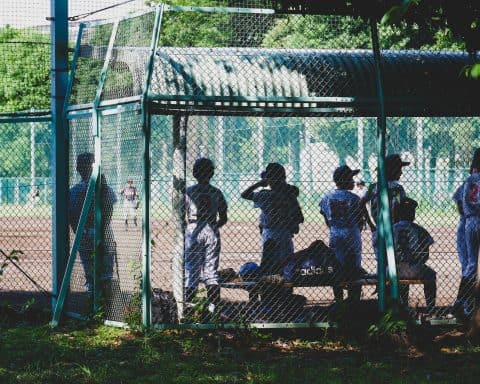
Why is Japan So Good at Baseball?
With Japan winning the 2023 World Baseball Classic, not only did I find myself wanting to own every single piece of Shohei Ohtani’s memorabilia,…
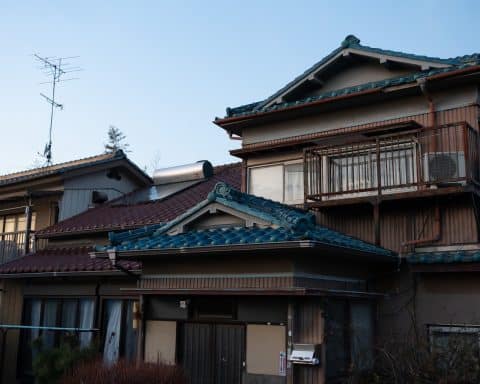
Why are Japanese roofs curved?
Perhaps the most synonymous feature of Japanese architectural design is the curved roof. Whenever I used to think about Japan before I moved here,…

Why is Japan called ‘The land of the rising sun’?
If you're from the western world, chances are high that you've heard Japan referred to as the 'Land of the rising sun'. But why…

Why Do Japanese People Bathe in the Evening?
Before I came to Japan, I was completely on the side of people who took a shower in the morning rather than in the…

8 Japanese Concepts To Improve Your Life.
Japanese aesthetic principles and concepts are often hard to decipher into actionable and practical ways to help you in daily life. In this article,…
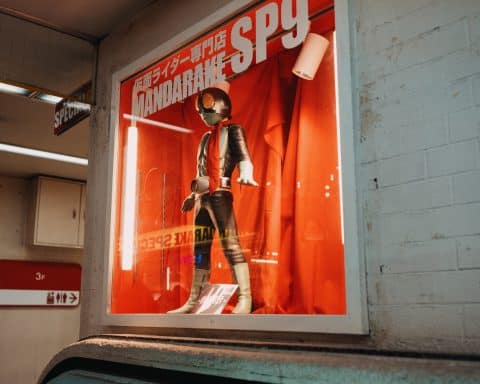
Why is Japan Perceived as Weird?
Pretty much anyone I’ve ever met that hasn’t spent a prolonged period of time in Japan has a certain view of the country. Normally,…

Why does Japan have small boxy cars?
A guide to Japanese Kei cars.…

Why is Japan Romanticized?
The more time I live in Japan, the more it becomes clear that so many people around the world romanticize it as a destination.…
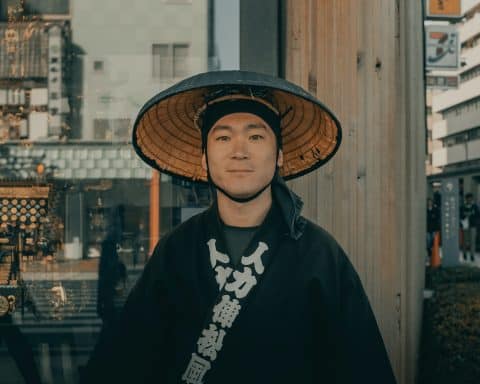
Why Don’t Japanese People Have Beards?
If you’ve ever been to Japan, you may have noticed the distinct lack of facial hair pretty much anywhere you look. At first, I…

The Strange Truth About Japanese Washing Machines
Japan is a country that enjoys the journey as well as the destination. Both in a metaphorical and physical sense.…

Jonny Gleason
Jonny is the founder of A Day of Zen and has an unhealthy obsession with Japan. In 2022 he moved to Japan on a mission to give his audience the best possible information. He's helped over 300,000 plan their trip so far, and is eager to make that number much bigger!
Read the story...
Leave a Reply Cancel reply
Your email address will not be published.
Save my name, email, and website in this browser for the next time I comment.
Notify me of follow-up comments by email.
Notify me of new posts by email.
Copy short link

Inside Akihabara: A Travel Guide to Japan’s Electric Town
A kihabara, Japan, is famous for its streets filled with colorful animation ads and bustling shopping centers, hence its nickname Electric Town. The district near central Tokyo is a welcoming destination for lovers of anime and games. As an epicenter for Japanese anime and cafe culture, it is full of bright lights, spacious streets, and welcoming shops and people . Akihabara is the second most popular city for tourists and is known as Akiba for short.
The pop culture paradise is ideal for those who want to celebrate Otaku culture, which generally refers to anime and manga fans. Characters from classic video games and animated series are featured in comics, collectibles, merch, and other specialized offerings. For travelers who want to indulge in a unique trip with plenty to do in the area and a special focus on anime and Japanese culture, Akihabara is perfect.
Things To Do in Akihabara
There are many attractions that have specialized games and activities in Akihabara. The shopping hub appeals to many subcultures, so it is well-loved by gamers, anime aficionados, and self-proclaimed geeks.
See the Electronic Stores
On the main Chuo Dori street there are hundreds of electronic shops. Some offer the latest computers, cell phones, cameras, televisions, and appliances available. Special technologies are also available at the stores in Akihabara, so collectors will find it to be a paradise. With both smaller and independently owned shops and chain stores, there are plenty of options for tourists to choose from and peruse. Some of the most popular chain stores are Laox and Sofmap.
Tourists should consider that some of the electronics available in Japanese stores are not intended for use outside of their country of origin.
Visit a Cafe
Cosplay cafes are great attractions to visit while in Akihabara since they are popular with tourists. Cosplay cafes are places where the waitresses dress up like popular anime characters and cater to guests with live performances, food, and of course, coffee. Guests who appreciate cosplay and animation-inspired experiences will love the cosplay cafes. One of the best cosplay cafes in the area is the Home Cafe , which caters to guests as if they have just returned home.
Explore a Historic Sight
Kanda Myojin (also known as Kanda Shrine) is a beautiful historic sight. The shrine dates back to the year 730 and has been restored many times. There are nine other shrines on the property and the estate is spacious. Kanda Myojin is dedicated to two deities, Daikokuten and Ebisu, which both contribute to the good fortune of others. Many visitors visit the shrine to pay respects to the deities and pray for prosperity. The site has free admission and is open year-round, so it attracts many tourists.
Experience Mario Kart
Travelers can live out their Nintendo dreams and drive around Akihabara in go-karts. Along with a tour guide who knows the local area, tourists can have an exhilarating experience that they will never forget. Travelers who book this excursion can drive around the public roads to explore the vibrant area and even wear a cosplay costume and take photos. The race lasts about two hours, but travelers should be sure to acquire an international license before getting on the roads.
Transportation in Akihabara
Getting to akihabara.
The best way to get to Akihabara is the station, which is north of Tokyo. The Akihabara station is a busy and sometimes confusing place. Technically, there are three Akihabara stations with different exits. The JR Akihabara (East Japan Railway Company), Tokyo Metro Akihabara Station (Hibiya Line), and Tsukuba Express Akihabara Station. The JR Akihabara Station is best for travelers coming from Tokyo, Shibuya, or Shinjuku. For those traveling from Roppongi, Ginza, or Tsukiji, the Tokyo Metro Akihabara Station is best. The Tsukuba Express Akihabara Station is the right choice for those coming from Asakusa and Tsukuba. These areas have direct lines and stations to Akihabara, so it may be best for travelers to stay close to those areas.
Of course, a traveler’s departure location determines the station they should be coming from, but from each Akihabara station, it is quite simple to get to central Akihabara. To get to Electric Town, travelers should use the Akihabara Electric Town gate on the first floor of the station. From there, as travelers exit the station they will see the Sega building and the Main Street of the Electric Town. From the Yamanote and Sobu line platforms, which are located on the second and third floors of the station, travelers simply need to go to the first floor.
It is recommended that travelers use the JR Pass or Tokyo Subway Ticket so that navigating the trains, metro, and subway is more affordable and convenient.
Getting Around Akihabara
As is common in Japan, most people walk to where they need to go. The main attractions are within walking distance of each other, so going on foot is the easiest way to get around. If that does not sound ideal, travelers can try alternatives. Japan has regular and rapid trains that go between the different wards. Travelers can acquire a one-day ticket that grants unlimited rides, which costs around 760 yen ($5). For car rides, taxis are more commonly used as they are more affordable in Japan, so that may be an adjustment for some travelers who are used to rideshare apps. Transportation throughout Japan, and specifically Akihabara, is not very hard to do even though there may be many people in the area.
Best Times To Visit Akihabara
Since Akihabara is located relatively close to Tokyo (around 25 minutes via car and an hour via train), the best time to visit coincides with the best time to visit Tokyo. The weather is the best from March to May or September to November. This area of Japan is cooler around these times with spring just beginning to blossom and autumn muting the summer sun. Sightseeing is much more comfortable with the mild temperatures. Travelers who want to enjoy the local festivals, events, and both indoor and outdoor activities can enjoy Akihabara the most during these seasons. Although weather is a reasonable consideration for travel, Akihabara is a good place to visit despite the season.
On Sundays, the main street of Akihabara (named Chuo Dori) is closed to cars so traffic ceases. Therefore, a pedestrian heaven (or hokosha tengōku) is created and travelers can freely walk around. Nighttime is also one of the best times to explore Akihabara since the electric lights along the streets and buildings light up the night sky and entice all who explore it.
Best Hotels
Nohga hotel akihabara tokyo .
This four-star accommodation has a restaurant, air conditioning, free wifi, a bar, 24-hour front desk assistance, and continental breakfast each morning. The Nohga Hotel is only around 13 miles from the Tokyo Haneda Airport and offers personalized insight into how travelers can best spend their time while in Akihabara. The accommodation prides itself on providing a culturally rich experience for each guest, which it proves in its music, arts, and culinary experiences.
Hotel Resol Akihabara
This modern hotel provides comfort and convenience to its guests. Since it is only a three-minute walking distance from the JR Akihabara Station, it is centrally located. The hotel boasts a New York decorative style and is located only 25 minutes (by car) from the Haneda Airport. The guest rooms even have refrigerators and WiFi, which is ideal for long-distance travelers. There is a convenience store within a short distance and an Italian restaurant within the accommodation, so travelers will have everything they may need during their stay in Japan .
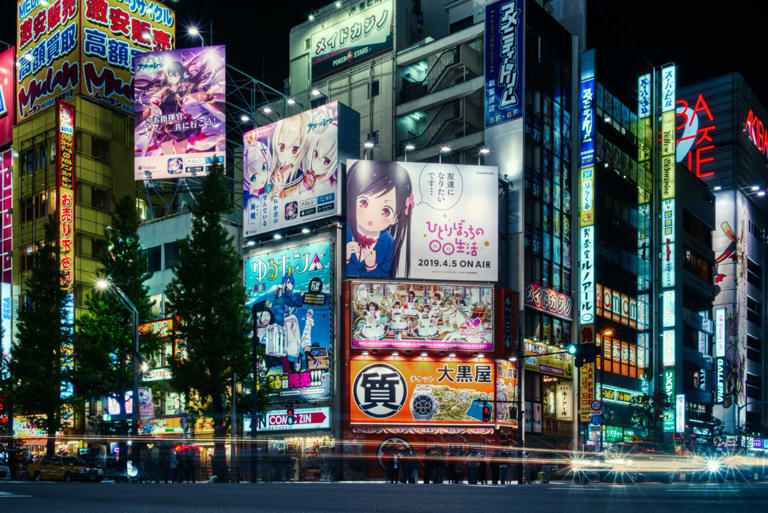

This content requires the base game LOUD: My Road to Fame on Steam in order to play.

Sign in to add this item to your wishlist, follow it, or mark it as ignored
Sign in to see reasons why you may or may not like this based on your games, friends, and curators you follow.

Downloadable Content
Buy my trip to japan, buy loud: world tour edition bundle ().
Includes 2 items: LOUD , My Trip to Japan
About This Content
Ichi, ni, san, yon time to rock in japan, new songs from japanese artists, new unlockables, system requirements.
- Requires a 64-bit processor and operating system
- OS: Windows 10
- Processor: Intel i5 4th gen or equivalent
- Memory: 4 GB RAM
- Graphics: NVIDIA GeForce GTX 780M or equivalent
- Storage: 1 GB available space
More from Untold Tales
More like this, what curators say, customer reviews.
You can use this widget-maker to generate a bit of HTML that can be embedded in your website to easily allow customers to purchase this game on Steam.
Enter up to 375 characters to add a description to your widget:
Copy and paste the HTML below into your website to make the above widget appear

Popular user-defined tags for this product: (?)
Sign in to add your own tags to this product.

Japan tackles overtourism with restrictions for some iconic sites

Mar 27, 2024 • 5 min read
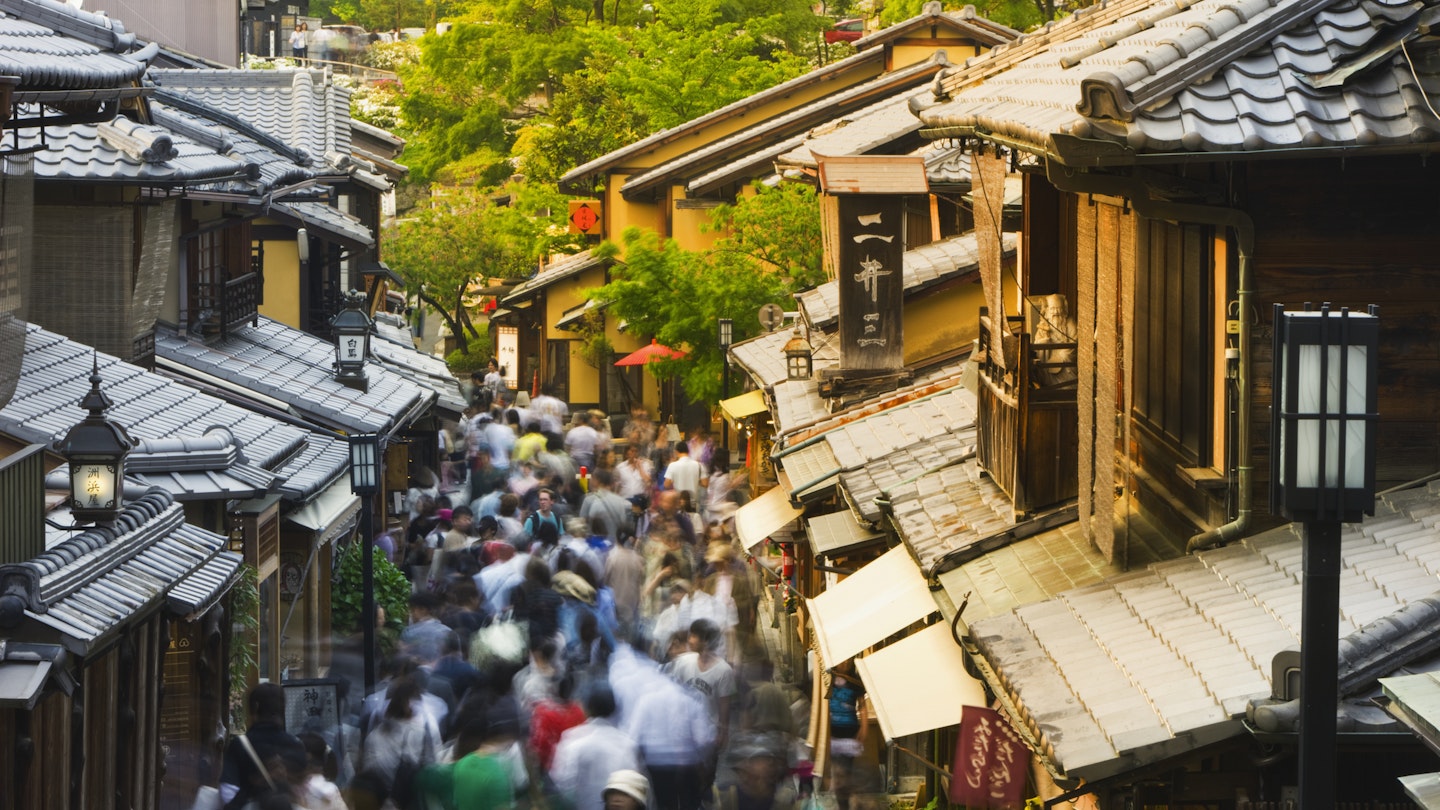
From restricted capacity to increased tourist taxes, options are being considered to counter overtourism in Japan © Jon Hicks / Getty Images
Japan is set to limit visitors at some popular attractions so that sites don't suffer from overtourism. Here's what you need to know.
Japan’s enduring popularity for overseas visitors is bringing consequences as the country seeks to balance the benefits of tourism and the impact on the areas visited, particularly at iconic destinations .
Recently, tourists have been banned from certain private streets in Kyoto ’s famous historic Gion district , traditionally home to the teahouses where geisha (geiko) and maiko (apprentice geiko ) performers work, largely due to antisocial behaviour. Unruly tourists have even been blamed for harassing geisha, with the Japan Times reporting that one had her kimono torn and another had a cigarette butt put in her collar.
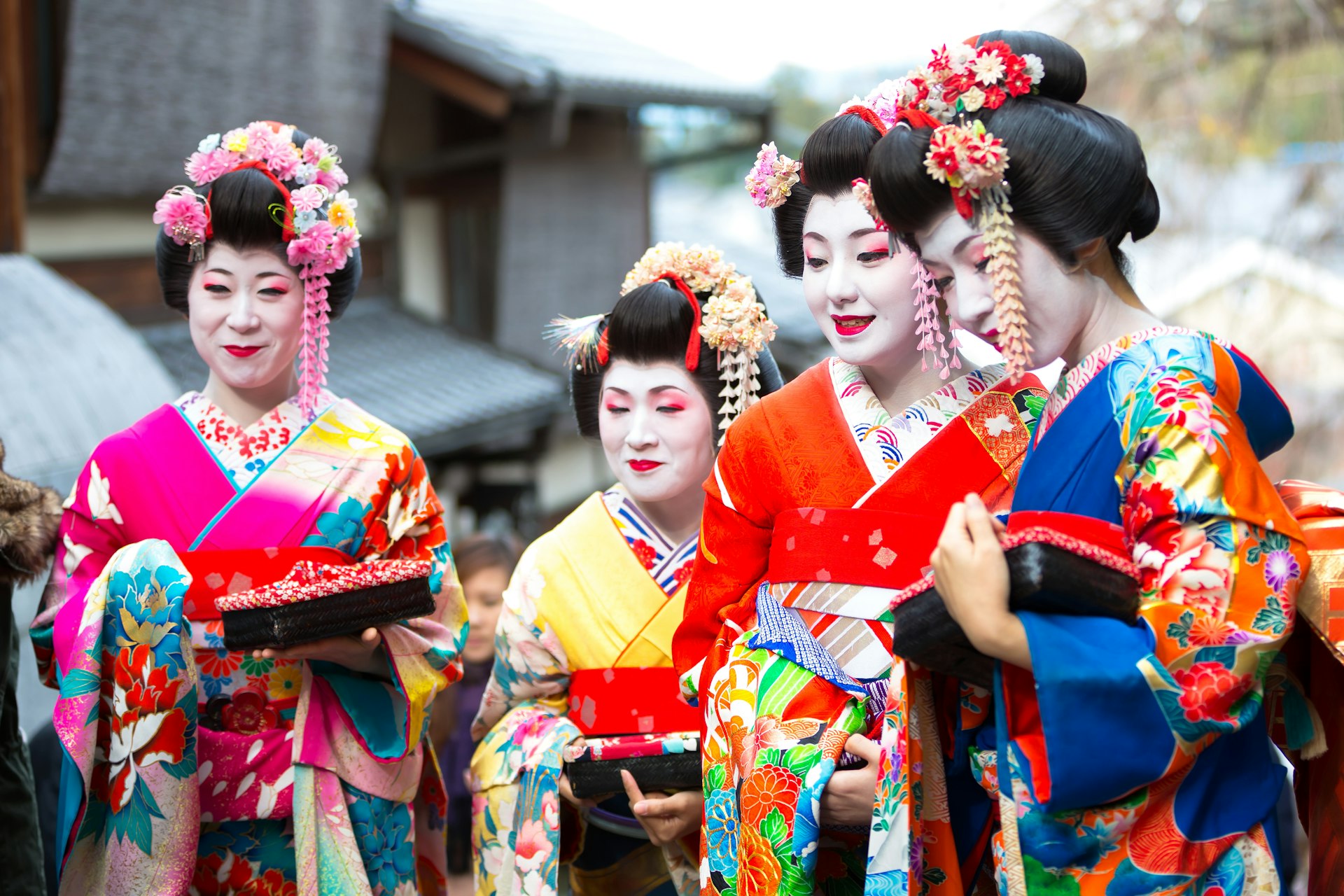
What new policies are being considered?
New fees and restrictions have already been introduced on climbing specific trails up Mt Fuji , in order to combat overcrowding, reduce the environmental impact — including cleaning up all the trash that results from so many people on the mountain — and improve safety for everyone doing the climb.
Kyoto is considering special tourist express bus routes, that will whisk visitors to the city’s most iconic sites in order to reduce overcrowding and improve efficiency on regular local buses, as well as to make what can be a complicated system easier for travelers.
Higher pricing for tourists is also being considered, having largely been absent in Japan, where many of the most famous cultural attractions are surprisingly inexpensive to enter. For example, Kyoto's famous golden temple Kinkaku-ji costs ¥400 for adults, which is about US$2.50. Changing this would be controversial, and it seems more likely that there would be increases in tourist taxes in order to fund services for visitors.
What are tourist taxes used for?
Local tourist taxes, usually collected as an extra on top of payment for your hotel, are common across many parts of the world, although these are relatively low in Japan compared with, say, destinations in the US like Honolulu and San Francisco.
These aim to fund some of the local costs associated with visitors: Kyoto’s is on a sliding scale based on the price of your hotel room, from ¥200–1000 a night (about US$1–7). The city of Hatsukaichi, home to the UNESCO-listed Itsukushima-jinja , often known as Miyajima and famous for its torii gate standing in the water off the island, recently implemented a ¥100 (about US$0.60) fee to fund the preservation and management of the site.
Japan already has a ¥1000 (about US$7) tourist departure tax that you may have never noticed as part of your plane fare.
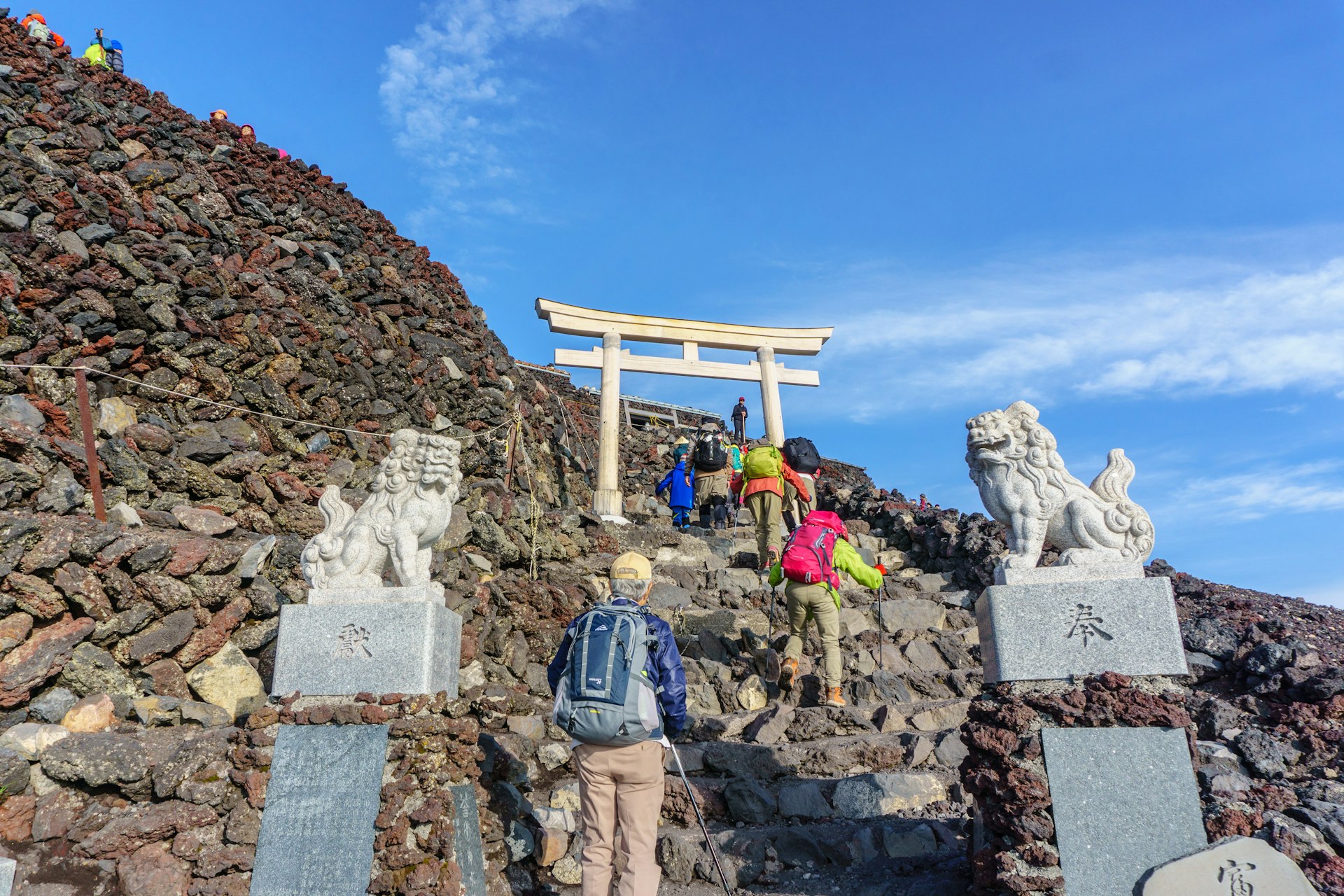
How is Japan likely to manage the problems of overtourism?
It seems unlikely that Japan will curtail its overall number of visitors because of overtourism. More likely, we’ll see more examples of capacity restrictions in specific places, like on Mt Fuji, where a certain number of people per day are allowed in.
This already happens in some cases in Japan: the famous Ghibli Museum in Tokyo and the new Ghibli Park in Nagoya both have a ticket maximum to maintain the quality of experience and to avoid overcrowding — the price for the former is just ¥1000 or about US$6.50, so it really is about capacity.
Some trains — specifically the fastest Nozomi and Mizuho Shinkansen between points west of Tokyo — are not included as part of the Japan Rail Pass , even though the slightly slower trains like the Hikari are. There’s only a few minutes' difference in terms of travel time, but at peak times there can be a half-dozen of the faster trains for every one of the slower ones. This is done for a variety of reasons, including that the clockwork-like efficiency of the shinkansen’s busiest section leaves only the briefest times for passengers to get on and off the train, and confused tourists (often carting large luggage with them) have been known to disrupt operations. Overseas visitors are therefore concentrated into the slightly slower Hikari and much slower Kodama services instead.
A more recent change is the 2020 introduction of the “Baggage 160” system , where travelers must reserve a space for larger pieces of luggage (over 160cm/63in in combined height, width and depth) on more popular bullet train lines or pay a carry-on fee. The change largely stemmed from the complications of visitors bringing large pieces of luggage onto trains that were not designed with large luggage storage. Japanese travelers tend not to bring large suitcases with them on trains, instead shipping them ahead to their destination via the excellent and inexpensive set of luggage delivery services like Yamato Transport , known as kuroneko (black cat) after its ubiquitous logo of a black cat carrying a kitten in its mouth.

How will this impact on group tours?
Keep an eye out for capacity management caps or even outright bans to potentially affect group tours first. These can be very unpopular with local people, and indeed with other visitors.
A tour bus full of visitors descending all at once can change the character of a place instantly, and that’s certainly the case in a lot of the most famous Kyoto temples and shrines like Kinkaju-ji, Ryōan-ji or Kiyomizu-dera . These groups often have a reputation for behaving disrespectfully, like talking loudly in places where quiet is expected, not following rules, and getting in the way of local people and more respectful travelers.
You’re unlikely to be affected as an independent traveler, and a smart tactic is to visit at times when these groups are either still making their way from their hotels, have been packed off for lunch, or are heading back at the end of the day — and to plan to explore the less-traveled corners of this fascinating country.
Explore related stories
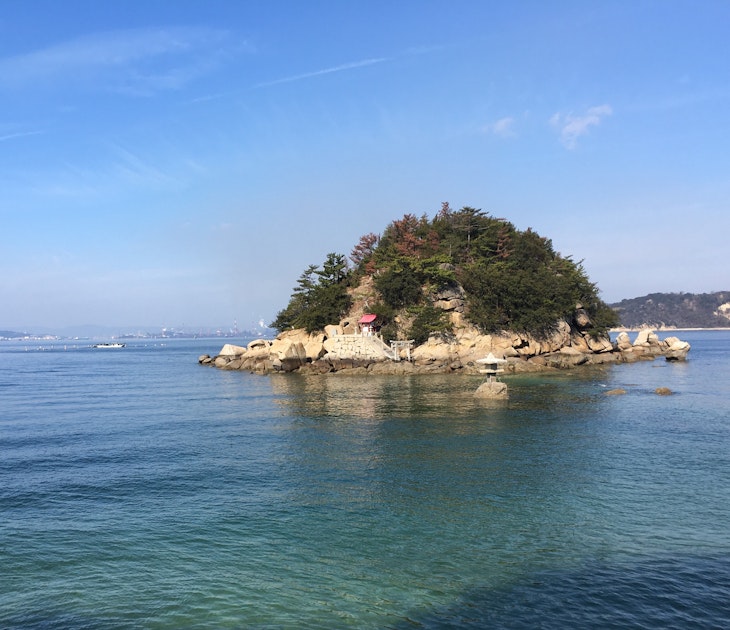
Mar 4, 2020 • 5 min read
Step away from Japan's big cities and sample some slow travel in and around the Seto Inland Sea.

Feb 5, 2020 • 4 min read

Apr 2, 2024 • 10 min read

Mar 28, 2024 • 7 min read

Mar 21, 2024 • 9 min read

Feb 21, 2024 • 7 min read

Feb 11, 2024 • 11 min read
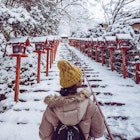
Jan 18, 2024 • 8 min read
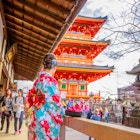
Dec 10, 2023 • 6 min read

Mar 7, 2023 • 7 min read

- About Us / Review Policy
- Lucas Hedgren
- Rick Thornquist
- Valerie Putman
- Andrea (Liga) Ligabue
- Greg Schloesser
- Jeff Allers
- Mike Siggins
- Mark Jackson
- Talia Rosen
- Matt Carlson
- Melissa Rogerson
- Mary Prasad
- Craig Vollmar
- Essen 2010 Coverage
- Essen 2011 Coverage
- Essen 2012 Coverage
- Essen 2013 Coverage
- Essen 2014 Coverage
- Essen 2015 Coverage
- Essen 2016 Coverage
- Game Award Chart
Unboxing – Let’s Go! to Japan KS edition
Well, I’m not normally one for unboxing posts – in part because we deal with text here on the OG – but I just got my production copy of Let’s Go! to Japan – and man, it’s beautiful. Thought I’d repost the review of the game from March 2023 (see below). But first… some pictures of the new edition!

Opened up the box to find two things. A board game sized box that I thought was the game (wrong) and another package wrapped up in a silk cover.

Had to untie the hand-tied knots to find the game!

Look at the components with lots of extras. Like a sticker sheet

The rules, a Travel Journal for you to keep track of your scores, the Passport expansion and an actual luggage tag to use when I go to Japan!

All of the tokens are a nice thick acrylic now. Feel great in the hand.

Plenty of bags to store things in :) And a roll of Washi tape. Finally, let’s look at the other box…

Can’t wait to get this spiffy new version to the table! If you want to know more about the game, read on for a reprint of an earlier review on the game.
Let’s Go! To Japan
- Designer: Josh Wood
- Publisher: AEG
- Players: 1-4
- Time: 45 minutes
- Played with preview copy provided by AEG
- KS link – https://www.kickstarter.com/projects/alderac/lets-go-to-japan-from-aeg

Per AEG: “In Let’s Go! To Japan, you are a traveler planning, then experiencing your own dream vacation to Japan. The game consists of thirteen rounds in which players draw activity cards illustrated by Japan-based artists and strategically place them in different days in their week-long itinerary. These can’t-miss tourist attractions will have you bouncing between Tokyo and Kyoto as you try to puzzle out the optimal activities to maximize your experience while balancing your resources. The game ends with a final round in which you ultimately go on your planned trip, activating each of your cards in order along the way. The player who collects the most points by the end of their trip wins!”
In this game, players vie to plan the best vacation to Japan; splitting time between the two major cities of Tokyo and Kyoto. The designer was apparently motivated to make this game when the COVID pandemic cancelled his real life trip to Japan!

Each player gets their own board which has slots for six days of travel. Above this is a large score track for your five attribute markers. Finally at the top, there is a player aid, a place to track your mood, and a space for other players to deposit cards. One player randomly places the 6 Favorable condition tokens on the six days of their board, and everyone else copies this pattern. The two decks of cards, one for Kyoto and one for Tokyo, are shuffled and placed on the table. The all-important turn tracker is placed in the center where all can see it.

The cards have a lot on them. At the top, there is a point value for playing the card as well as experience icons (Temples, Food, Nature, Shopping, Unique experiences). The middle has the title, some great artwork depicting the topic of the card and them a short paragraph explaining something about that location or thing. Finally, at the bottom, there are some bonus scoring criteria if this card is the Highlight of the Day. There are a few multiples in the decks, but there are a lot of different locations and activities depicted on the cards in this game.

Each round follows a pretty simple format. First you draw cards based on what the round tracker tells you to do. You may draw from the face down decks and/or from the facedown stack on your player board (which gets populated when other players discard cards to you). Then, the round board tells you how many cards you will play to your board and how many you will discard.
When you play cards, you place them underneath the six day columns on your board. Interestingly, though you play the cards throughout the course of the game, and while the cards give you icons and VPs, you do not score them until the very end. Just play them to the table and move on.

You can play a card to any day, and if previous cards are already played to that day, you can place them freely above or below those cards – just keep all your cards for a day in a single stack, such that you can easily see the icons and VPs at the top. Once you settle on a location, you can’t move it again later, so be sure in your decision.
If you don’t like the choices in your hand, you can plan on a walk – discard any card to the discard pile and then take to top card of either deck and place it face down onto a day. (All the cards say “Go For a Walk” on the back). You also get one research token when you do this. Research tokens can be discarded at any time to allow you to draw any 3 cards and then immediately discard 3 cards to the central discard pile.

You can generally have 3 cards in a column, and once you have played your third card to a day; you immediately check to see if you get a bonus. In setup, players placed a Favorable Condition token next to each day; if you have 1, 2 or 3 matching icons in your completed day, you will get an immediate bonus:
- 1 match – move the mood tracker one space to the right
- 2 matches – take 2 research tokens or one wild attribute token
- 3+ matches – take a special train token or take an extra walk; put an additional face down card into the day
After you have played the requisite card(s), you should then pass the remaining cards in your hand to your opponent – the board tells you which direction to go. Your hand is empty, and you’re ready for the next round. Follow the pattern on the round board to complete all 13 rounds. At the end, you will have played 18 cards, enough for three to each of the six days on your vacation. Your trip is fully planned, and now it’s time to actually go do the things that you’ve planned! You’ll need to put train tokens down on your itinerary. Each time you move from Tokyo to Kyoto (or vice versa), you must put a train token down. A normal train token comes with a -2VP penalty, but the special train tokens you can get from the Day bonus scoring are worth positive 2VP instead and 1 happiness.
One player takes the score pad and records scores. Players will go through their vacation, starting with Monday and going all the way thru the week to Saturday, going from top to bottom in each day. As you encounter a card, move your attribute markers ahead one space for each matching icon found on the top of the card. If you have a green (happy) arrow or a red (stressful) arrow, move your mood token in the direction of that arrow. Though you don’t score trains at this time, don’t forget to take the happiness if you have a special train token on that day! If you ever reach the extreme left of the track, move your stress score to the next space and reset your mood token. Likewise, if you reach the extreme right of the track, move your happiness score to the next space and then reset your mood token.

Whichever card is at the bottom of the stack, i.e. fully exposed, is the highlight of the day. See if you meet the criteria shown on the card, and if so, score points as indicated. The criteria are met based on the positions of your attribute marker at the time of that particular highlight scoring.
You likely will have some walk cards in your trip as well. When you come across one, you pick it up and turn it over to read what the surprise location is on the other side. You can choose to either use this new mystery location or leave the card face down as a walk. Score the side of the card you choose to leave visible, and note that if you use the back side, you get to place a walk token on the card to get credit for taking that walk.
Total up your points for the day – adding up the points on all the upper right corners of the cards as well as any points scored from the Highlight of the day bonus, assuming you met the criteria for scoring, and then write the tally down on the score sheet for that day. Repeat the process for all six days.

At the end of the trip, also add up the points from your happiness and stress charts, putting that number on the sheet as well. You can add up the points on your train tokens as well. Look at the locations of your five attribute markers on your track and score the VPs based on the scoring lines that each have passed. Finally, score 1VP for each unused research token you have left. The player with the most points wins.

My thoughts on the game
So, I didn’t realize it until I looked it up on BGG, but I’m apparently a big fan of Josh Wood’s work – in the past few years, I have very much enjoyed some of the games that he’s worked on; Santa Monica (designer), Tiny Towns (developer), and the Guild of Merchant Explorers (developer). This game was pleasing both to the mind and the eye, and it has definitely been one of my favorites of Spring 2023 so far.
If you have read the travelogues of James Nathan posted here about his most recent Tokyo trip, you’ll likely gather that he’s a vacation planner. His prepwork is amazing; hotels, restaurants, activities, ways to get there, backup ways to get there if something happens, etc. This game brought back fond memories of reading about his trip as you have a similar feel here – you plan out your trip first, and then you see how everything turns out when you score at the end.
There is a lot of strategy that goes into the planning of your trip, and a certain amount of luck to draw the cards you need. You can only play a limited number of cards each turn, and your hand is empty at the end – there is no way to save cards. If you end up with two cards that you want, you’ll have to make a difficult decision on which one to keep and which one to pass onto an opponent. While the direction of passing does change once during the game; for the most part, once you pass a card, it goes off in a direction and couldn’t possibly come back to you unless passed all the way around – and this seems unlikely.
You’ll have to consider whether or not to match the icon of the day, what card to leave at the bottom for the highlight, calculating where your attribute tokens will be at the end of each day in order to try to score said highlight, monitoring the progress of your mood token in order to try to score happiness bonuses or avoid aggravation maluses, etc. Some turns will be super easy as one card works and the other simply doesn’t – but man, be prepared for some harder choices when all the cards are good. If they’re all bad, don’t forget about the option to simply discard a card and go for a walk. Sure, it’s a compete crapshoot; but the walk itself isn’t necessarily awful, and there is always the chance that you draw something awesome.

Thus far, I have definitely tried to get a few columns that all match the icon of the day; getting the +2VP bonus trains really has paid off for me; allowing for some worry free travel between the two cities; and this in turn makes more cards look attractive when I’m choosing what to play. Other players have found that going for the research tokens has instead been better – allowing them to draw 3 cards to look at when their hand options aren’t ideal; and this has often paid off as well.
One thing that our group has chosen to do is to have player focus on their own board; I’m sure there is possibly a slight increase in success if you carefully looked at what your opponents were doing and then you could determine cards of which city you’d like to pass – but the payoff here is pretty small for the time it would take. We’ve chosen to play with a gentleman’s agreement to just focus only on your own board and then pass cards – not looking to see what your opponents might be collecting. This strategy may not work for all groups, but for us, it keeps the game firmly in the 30 minute range, and that is perfect for the weight of this game.
One thing that we all laughed at during the rules teach was this line: “It is strongly recommended for your first game… to have players take turns narrating the enriching activities they did for each day.” I thought, surely, there is no way we’re doing this. But, then we did. And really – that’s what makes the game so cool. As you read out the locations, and some of the necessary flavor text – you really do weave a story about your vacation; sometimes adding in other things you might do. It really makes you feel like you’ve taken a trip, and I must say that it makes the game better. The awesome graphics and the detailed text on each card also help you feel like you’ve really been to these places.

Let’s Go! To Japan immerses the players in trip planning for their upcoming Japanese vacation. Between the art and the flavor text, I have found that I really feel like I’m planning a trip; and I’m the sort of person who actively enjoys the planning of a trip as much as the trip itself. The gameplay is engaging with quick turns, and when combined with a theme that really appeals to me – this one will be a keeper for sure. I’m looking forward to many Japanese trip planning sessions this spring, and who knows, maybe this game will help me when I actually make it back to Japan!
Ratings from the Opinionated Gamers
- I love it! Dale Y
- Not for me…
Share this:
About Dale Yu
Leave a reply cancel reply, search for any game title or keyword on the opinionated gamers, follow the opinionated gamers blog via email.
Enter your email address to follow this blog and receive notifications of new posts by email.
Email Address
Support the Opinionated Gamers! If you enjoy our content here, help keep us independent!
Follow Blog via Email
Recent posts.
- Dale Yu: Review of Pyramidice
- Dale Yu: Review of Mind Map
- Larry Levy: 2023 Designer of the Year Award
- Josiah Fiscus: Review of Heroquest Against the Ogre Horde
- Dale Yu: Review of Knarr
- Dale Yu: Review of Emerge
- Review GACHIJO: Four Ninja and the Castle of Treasures
- Dale Yu: Review of Urbify
- Dale Yu: Review of The Easter Escapade (Holiday Hijinks #8)
- Dale Yu: Review of Ingenious (2023)
- Dale Yu: Giveaway and Review of Sidequest: 7th Sea (possible mild spoilers)
- Dale Yu: Review of Tesseract
- Dale Yu: Review of Nanatoridori
- Hair of the Dog (Review by RJ Garrison)
- Play – The Games Festival – 2024 edition
Follow me on Twitter
Recent comments, blogs by the opinionated gamers.
- AKA Pastor Guy
- Berlin Game Design
- Garrett's Games and Geekiness
- Ludologo – Liga's Italian Blog
- NYC Gamer | Washington Bureau
Blogs in English
- About.com – Boardgames
- Board Game Blues
- Board Game Industry Directory
- Board Game Reviews by Josh
- Boardgames in Blighty
- Bruno Faidutti's Site
- Mango's Gaming
- Mikko's Gameblog
- Purple Pawn
- Seize Your Turn
- Simply Board
- Spiel: Boardgames in the UK
- The Gaming Gang
- The Superfly Circus
- The Tao of Gaming
Blogs in other languages
- Cliqueabend
- De Tafel Plakt!
- Spellenclub SpinLi
Gaming Sites the OGs Frequent
- BoardGameGeek
- Entries feed
- Comments feed
- WordPress.org
- 138 Games (24)
- Best Of (106)
- Board2Pieces & Humor (4)
- Commentary (428)
- Convention Report (414)
- Designer Diary (5)
- Essen 2011 (34)
- Essen 2012 (61)
- Essen 2013 (84)
- Essen 2014 (98)
- Essen 2015 (105)
- Essen 2016 (122)
- Essen 2017 (78)
- Essen 2018 (87)
- Essen 2019 (96)
- Essen 2020 (91)
- Essen 2021 (68)
- Essen 2022 (105)
- Essen 2023 (108)
- Fireside Games (1)
- First Impressions (332)
- Game Modification (6)
- Gathering of Friends (41)
- Giveaway (1)
- Holiday Gift List (9)
- Humor / Satire (9)
- Interviews (57)
- Kickstarter (52)
- Preview (128)
- Puzzles (3)
- Reviews (2,413)
- SdJ Re-Review (39)
- Selections from the Web (12)
- Sessions (78)
- Site News (41)
- Tokyo Game Market (18)
- Tournaments (12)
- Uncategorized (145)
Subscribe to Blog via Email
Enter your email address to subscribe to this blog and receive notifications of new posts by email.
Discover more from The Opinionated Gamers
Subscribe now to keep reading and get access to the full archive.
Type your email…
Continue reading
Russia-Ukraine war latest: Putin 'may launch all-out bid to seize second city' - as Western officials fear major Russian advance
Russia has launched fresh strikes on critical infrastructure - with Kyiv residents told to cut energy consumption every night for the rest of 2024. Meanwhile, Western officials reportedly fear a major Russian advance - amid concerns Vladimir Putin could launch an attempt to seize Kharkiv.
Saturday 13 April 2024 14:06, UK
- Ukrainian defences 'at risk of collapse' as officials fear major Russian advance - and all-out assault to seize second city
- Russia hits critical infrastructure in overnight missile strikes
- Putin mocks peace conference
- The big picture : Everything you need to know about the war this week
- Your questions answered: Is it too late to save Ukraine?
While we haven't been able to bring you live updates today, we have been keeping an eye on what's been happening in the Ukraine conflict.
Here's a quick round-up of the key updates so far:
At least 10 people, including children, have been killed by shelling in a Russian-occupied town in Ukraine's southern Zaporizhzhia region, a local Kremlin-installed official said.
A Ukrainian rocket also struck a machine-building plant in Russian-occupied Luhansk in eastern Ukraine, injuring three civilians, according to Moscow-based official Vladimir Rogov.
Meanwhile, Russia has claimed to have taken a village in Ukraine's Donetsk region.
Russia's defence ministry said the capturing of Pervomaiske had improved its tactical position on the frontline.
Ukraine's army chief has also warned the situation on the eastern front had deteriorated in recent days, with Moscow's forces intensifying its armoured assaults.
Colonel General Oleksandr Syrskyi said battles were still raging for control of a village west of the devastated Bakhmut - an area that has seen some of the bloodiest fighting throughout the war.
We'll be back tomorrow morning with more updates on the war in Ukraine.
Two Biden administration officials have revealed the extent of China's involvement in Russia's war on Ukraine.
The officials spoke to Reuters news agency and said China has massively increased its sales to Russia of machine tools, microelectronics and other technology to Moscow.
These items are important because Russia is using them to make tanks, aircraft, missiles and other weapons for the war.
They also said:
- About 90% of Russia's microelectronics came from China
- Nearly 70% of Russia's approximately $900m in machine tool imports in the last quarter of last year came from China
- Chinese and Russian entities have been working together to make drones in Russia
- China is helping Russia improve its satellite and other space-based capabilities for use in the war. This could increase the threat Russia poses across Europe
US President Joe Biden has previously raised concerns with Chinese President Xi Jinping about Beijing's indirect involvement in the war.
US Treasury Secretary Janet Yellen returned this week from a visit to Beijing and said she had warned China that the Biden administration was prepared to sanction Chinese banks, companies and Beijing's leadership if they helped Russia's military in the war.
She has already been given the go-ahead from Mr Biden to sanction financial institutions that help Russia's military-industrial complex.
US Secretary of State Antony Blinken is due to travel to China for talks next month.
Russia, increasingly isolated economically and diplomatically, has become more reliant on China in recent months.
One official said Chinese materials are helping Moscow undertake its "most ambitious defence expansion since the Soviet era and on a faster timeline than we believed possible early on in this conflict".
"Our view is that one of the most game-changing moves available to us at this time to support Ukraine is to persuade the PRC (China) to stop helping Russia reconstitute its military industrial base. Russia would struggle to sustain its war effort without PRC input," the official said.
Chinese Embassy spokesperson Liu Pengyu told Reuters that Beijing has not provided weapons to any party and that it is "not a producer of or party involved in the Ukraine crisis".
"We urge the US side to refrain from disparaging and scapegoating the normal relationship between China and Russia."
If Russia defeats Ukraine it will be a "turning point in history", former UK prime minister Boris Johnson says.
Writing in the Daily Mail, he criticised Western countries for not providing Ukraine with the weapons it needs to defeat Russia.
"Every week in which we fail to do the obvious — and give the Ukrainians the weapons they need — is a week in which Putin gets closer to his disgusting ambition, to torture a European country to death.
"Every day the pressure on the Ukrainians is growing — and yet the solution is within our grasp."
Mr Johnson, who visited Ukraine a number of times during his premiership, said: "A defeat for Ukraine would usher in a new era of fear in the whole Euro-Atlantic area, as Putin continues his drive to rebuild the Soviet empire: from the Baltics to Georgia to Moldova to Central Asia to the Arctic.
"It will be a terrifying moment for the people of Taiwan and the clearest possible signal to China that the West has lost the willpower to protect democracy.
"It will be a turning point in history, the moment when the West finally loses its post-war hegemony, the moment when borders everywhere are suddenly up for grabs and aggression is seen to pay — and all because of a failure to stand up for Ukraine."
Mr Johnson warned the world is "on a knife-edge, with a real risk that Western democracies are about to be humiliated, and autocracies emboldened around the world — because of our lassitude, our pathetic refusal to do what is necessary".
He said Ukraine is so short of shells that its troops sometimes have to wait under Russian bombardment because they can't fire back.
The shortage of air defences means Kharkiv, the second-largest city, is "in danger of being turned into another Mariupol", he added.
Ukrainians were able to intercept 90% of incoming strikes, he said, but now "we are starving them, for reasons I do not understand, of the protective shields they need".
Mr Johnson called on the US Congress to approve a $60bn military aid package earmarked for Ukraine and on the Germans to supply Taurus missiles.
The West - including Britain - needs to "snap out of our sleep-walk", he said, adding: "The simplest and most cost-effective way to defend freedom is to invest now in the defence of Ukraine."
Rescue workers in Ukraine have saved five puppies from under the debris of a destroyed building.
The non-residential building was on fire in the north-eastern city of Sumy, close to the border with Russia.
A video from the State Emergency Service of Ukraine showed the firefighters cuddling the squealing puppies and rinsing them off with water.
In a post of the emergency service's Telegram channel, officials said the "little ones" were not injured.
"This rescue story reminds us of the importance of human compassion and the willingness to help everyone, regardless of the circumstances," they added.
Ex-armed forces minister James Heappey has told Sky's defence and security editor Deborah Haynes the UK should consider sending its forces to Ukraine to train troops.
On the Sky News Daily, host Tom Cheshire talks to her and Sky's military analyst Professor Michael Clarke about the interview with Mr Heappey, who stepped down from his role last month.
They assess the bleak situation in Ukraine and why the conflict is at a critical stage. They also discuss how prepared the UK would be if it faced a war in the near future.
A former Ukrainian secret service employee has been injured in Moscow after a device under his car exploded.
Vasily Prozorov suffered leg injuries that are not considered life threatening after the device detonated as he tried to start his car, Radio Free Europe cited Russian media as saying.
According to RFE, Mr Prozorov worked for Ukraine's SBU until 2018.
The following year, he told media in Moscow that he had collaborated with Russia "for ideological reasons" from April 2014 until he left the SBU.
These photos show the damage to a thermal power plant in Kharkiv, eastern Ukraine.
A massive missile and drone attack destroyed and damaged a number of power plants across Ukraine overnight, part of a renewed Russian campaign targeting energy infrastructure.
The Trypilska plant, which was the biggest energy supplier for the Kyiv, Cherkasy and Zhytomyr regions, was struck numerous times, destroying the transformer, turbines and generators.
Vladimir Putin said the attacks were a response to Ukrainian strikes that targeted Russian oil refineries.
In Kharkiv, there were at least 10 other strikes on energy infrastructure, resulting in damage like that seen in these photos.
Ukraine's foreign minister Dmytro Kuleba said more than 200,000 people in the region were without power.
Herman Halushchenko, its energy minister, said it was a "large scale, enormous, missile attack that affected our energy sector very badly".
More details have emerged about American Russell Bentley, who is missing in the Russian-controlled Donetsk region in eastern Ukraine.
Online news outlet Mash said he disappeared on 8 April after a district in the city of Donetsk was shelled by Ukrainian forces.
Mash cited his wife as saying he had gone to see if anyone needed help but had not returned.
Mr Bentley joined pro-Russian fighters in eastern Ukraine in 2014.
According to Russian news outlet RIA, he later swapped his gun for journalism and worked with state-run news outlet Sputnik.
In a 2022 Rolling Stone interview, he came across as a conspiracy theorist (he said the collapse of the World Trade Towers was a "pre-planned controlled demolition") and a fan of dictators (he described war crimes-accused former Libyan leader Muammar Gadhafi as "one of the greatest").
He became a citizen of the Donetsk People's Republic in 2017 and a citizen of Russia in 2020, said the interview, which was headlined The Bizarre Story Of How A Hardcore Texas Leftist Became A Frontline Putin Propagandist.
In words similar to those of Russia's president Vladimir Putin, Mr Bentley described the Ukrainian military as "genuine mass-murdering Nazis", also claiming their ranks were swelled by "thousands of ISIS cannibals" - claims that have been widely dismissed by commentators.
The Netherlands will provide Ukraine with an additional €1bn (£850m) in military support this year, and has earmarked three-times that amount for next year.
Dutch Prime Minister Mark Rutte delivered the news in a social media post.
The extra support in 2024 takes the total sum for this year to €3bn (£2.56bn), along with €400m (£340m) to support Ukraine's economy, Mr Rutte said.
"Ukraine must win this battle - for their and our safety," he said.
Be the first to get Breaking News
Install the Sky News app for free

- Cast & crew
- User reviews
Back to Black

The life and music of Amy Winehouse, through the journey of adolescence to adulthood and the creation of one of the best-selling albums of our time. The life and music of Amy Winehouse, through the journey of adolescence to adulthood and the creation of one of the best-selling albums of our time. The life and music of Amy Winehouse, through the journey of adolescence to adulthood and the creation of one of the best-selling albums of our time.
- Sam Taylor-Johnson
- Matt Greenhalgh
- Marisa Abela
- Eddie Marsan
- Jack O'Connell
- 9 User reviews
- 25 Critic reviews
- 52 Metascore

- Amy Winehouse

- Mitch Winehouse

- Blake Fielder-Civil

- Cynthia Winehouse

- Janis Winehouse

- Raye Cosbert

- Nick Shymansky

- A & R Manager

- Aunt Melody

- Perfume Paul

- Island Records Senior Executive

- CID Officer

- Uncle Harold
- All cast & crew
- Production, box office & more at IMDbPro
More like this

Did you know
- Trivia Marisa Abela did all the singing in this film herself. She trained extensively to mimic Amy Winehouse 's vocals.
Technical specs
- Runtime 2 hours 2 minutes
Related news
Contribute to this page.

- See more gaps
- Learn more about contributing
More to explore

Recently viewed

IMAGES
VIDEO
COMMENTS
To Japan from AEG on Kickstarter! You've picked the date and booked your flight. Now it's time to plan your dream vacation to Japan! Share this project. Done. Tweet ... NV Tabletop Games $703,386. pledged of $10,000 goal 11,099 backers Funding period. Mar 21, 2023 - Apr 10, 2023 (20 days) ...
As the game's protagonist, you'll travel to famous Japanese sightseeing spots in the company of a pair of beautiful young sisters. The girls will describe the spots, take you out to dinner, and grow closer to you throughout your travels. The thrill of taking a trip through Japan with pretty girls is the experience offered by this "Guide Game ...
To Japan: Day Trip allows players to visit cities outside of Tokyo and Kyoto. Will you eat amazing street food in Osaka, visit the castle ruins of Fukuoka, or will you feed the bowing deer of Nara? The Day Trip expansion adds 12 Day Trip cards which give players additional goals allowing for even more strategic decisions and add Sunday to the game.
There are three different games in the Akiba's Trip series to play if you want to go on a virtual pilgrimage: Undead & Undressed, the 2011 PSP remaster Hellbound & Debriefed, and the turn-based RPG spin-off Akiba's Beat. The games also spawned an animated spin-off: Akiba's Trip: The Animation . 2.
That completely unrealistic plot aside, Go! Go! Nippon! is in essence a glorified travel guide. Like any visual novel, there are choices to be made and a couple of different endings, but the main point of the game is to show you around some of the biggest tourist attractions in Japan.
The game ends with a final round in which you ultimately go on your planned trip, activating each of your cards in order along the way. The player who collects the most points by the end of their trip wins!" In this game, players vie to plan the best vacation to Japan; splitting time between the two major cities of Tokyo and Kyoto.
4) The trains are amazing. Japan's public transport system is superb, and it has to be. The Greater Tokyo Area has something like 38 million people living in and around it, and a hub like ...
The latest version of the game includes 50% more content, including new sightseeing locations and love interest events. ... This content requires the base game Go! Go! Nippon! ~My First Trip to Japan~ on Steam in order to play. All Reviews: Very Positive (76) - 92% of the 76 user reviews for this game are positive. Release Date: ...
Go! Go! Nippon! is a visual novel about a guy from an ambiguous country that takes a sightseeing tour around Japan (mostly Tokyo) with the help of two Japanese girls. This game is a bit of an oddity. There's actually very little gameplay here; you make roughly five choices throughout the whole experience.
About This Game. In times of quarantine and inability of people to travel, we want to introduce digital tourism opportunity for people to experience a digital trip to a fantasy world Japan. Visit the iconic Shibuya suburb of Tokyo, walk at atmospheric Japanese street markets, immerse into a new culture and other people's way of living.
This walkthrough will tell you exactly how to get both of the heroine's ending and 100% game completion. Like any other visual novels, you need to save your game at specific section to get all the CGs. ... Nippon! ~My First Trip to Japan~ Section 4 - Conclusion ありがとうございます! Thank you for reading my walkthrough! I hope this ...
Travel to Japan with no quarantine! This casual driving game will take you to five beautiful cities in Japan - Tokyo, Yokohama, Kyoto, Osaka and Sapporo! Drive without crashing and collect coins. Once you collect 10,000 in Japanese Yen, you will be able to travel to another city, i.e., move onto the next level!
There are so many whimsical places to visit, from video game-themed cafes to anime museums. To make the best out of your trip to Japan, read our comprehensive list of otaku places in Japan tailored for gamers and anime fans! Also read: 10 Best Airbnb Homes & Vacation Rentals in Japan for the Trip of a Lifetime. Must-visit Tokyo anime places and ...
Go! Go! Nippon! ~My First Trip to Japan~ - The week you spend in Japan will certainly be memorable!!!Get a taste of the foreign travel offered by printed guidebooks.Enjoy a tour around Japan from the comfort of your own home!As the game's protagonist, you'll travel to famous Japanese sightseeing spots in the company of a pair of beautiful young sisters. The girls will describe the spots, take ...
Nippon! ~My First Trip to Japan~? When focusing on the main objectives, Go! Go! Nippon! ~My First Trip to Japan~ is about 3 Hours in length. If you're a gamer that strives to see all aspects of the game, you are likely to spend around 6 Hours to obtain 100% completion. Go! Go! Nippon! 2016. How long is Go!
Go! Go! Nippon! is designed as a guide to Japan told in a visual novel form with a touch of romance. It takes place over the course of a week. The player can choose the destination for the first 3 days. The 4th and 5th days are spent at Kyoto and the 6th day is determined by the girl who the player is closer to.
Walk through the bustling streets of Shibuya, fight your way through Osaka, or just attend a Japanese high school - here are 8 Japanese video games to instantly teleport you to Japan. 1. The World Ends With You (DS, Switch, iOS, Android) Image credit: GamesRadar. You wake up flat on the road in the middle of the Scramble Crossing in Shibuya.
T he experience of travelling in Japan is simultaneously overwhelming and freeing. The world feels bigger out there, gilded by how mainstream video game culture is in comparison with the west. It ...
9. Golden Route of Japan | Anime & Game Show. From Kyoto (Osaka) To Tokyo. Tuesday, November 8, 2022 Updated. Tokyo Game Show is the spot to go for the latest in gaming news. ©Getty Images for TOKYO GAME SHOW.
Hit the road and head for the Land of the Rising Sun! Travel to Japan is an exciting Hidden Object travel adventure! Hop aboard with the Hudson family and discover the legendary beauty of the Land of the Rising Sun. Travel to 10 different cities and find over 1,000 hidden objects.
About Sugoroku: 'Sugoroku' is a term that refers to two separate traditional Japanese board games. The first is called 'Ban-Sugoroku' meaning Board-Sugoroku, and the second is 'e-Sugoroku' which translates to Picture-Sugoroku. Ban-Sugoroku was brought to Japan through China (surprise surprise) around the 6th century.
Japan has regular and rapid trains that go between the different wards. Travelers can acquire a one-day ticket that grants unlimited rides, which costs around 760 yen ($5).
CNBC
Ichi, Ni, San, Yon! Time to Rock in Japan! Another step on Astrid's road to fame awaits in LOUD: My Trip to Japan. Encouraged by her manager, the rising teenage star hits the road and sets off to the land of cherry blossoms to breathe in the atmosphere and perform with the best.
Some trains — specifically the fastest Nozomi and Mizuho Shinkansen between points west of Tokyo — are not included as part of the Japan Rail Pass, even though the slightly slower trains like the Hikari are.There's only a few minutes' difference in terms of travel time, but at peak times there can be a half-dozen of the faster trains for every one of the slower ones.
In this game, players vie to plan the best vacation to Japan; splitting time between the two major cities of Tokyo and Kyoto. The designer was apparently motivated to make this game when the COVID pandemic cancelled his real life trip to Japan! Each player gets their own board which has slots for six days of travel.
Russia has launched fresh strikes on critical infrastructure - with Kyiv residents told to cut energy consumption every night for the rest of 2024. Meanwhile, Western officials reportedly fear a ...
Back to Black: Directed by Sam Taylor-Johnson. With Marisa Abela, Jack O'Connell, Eddie Marsan, Lesley Manville. The life and music of Amy Winehouse, through the journey of adolescence to adulthood and the creation of one of the best-selling albums of our time.